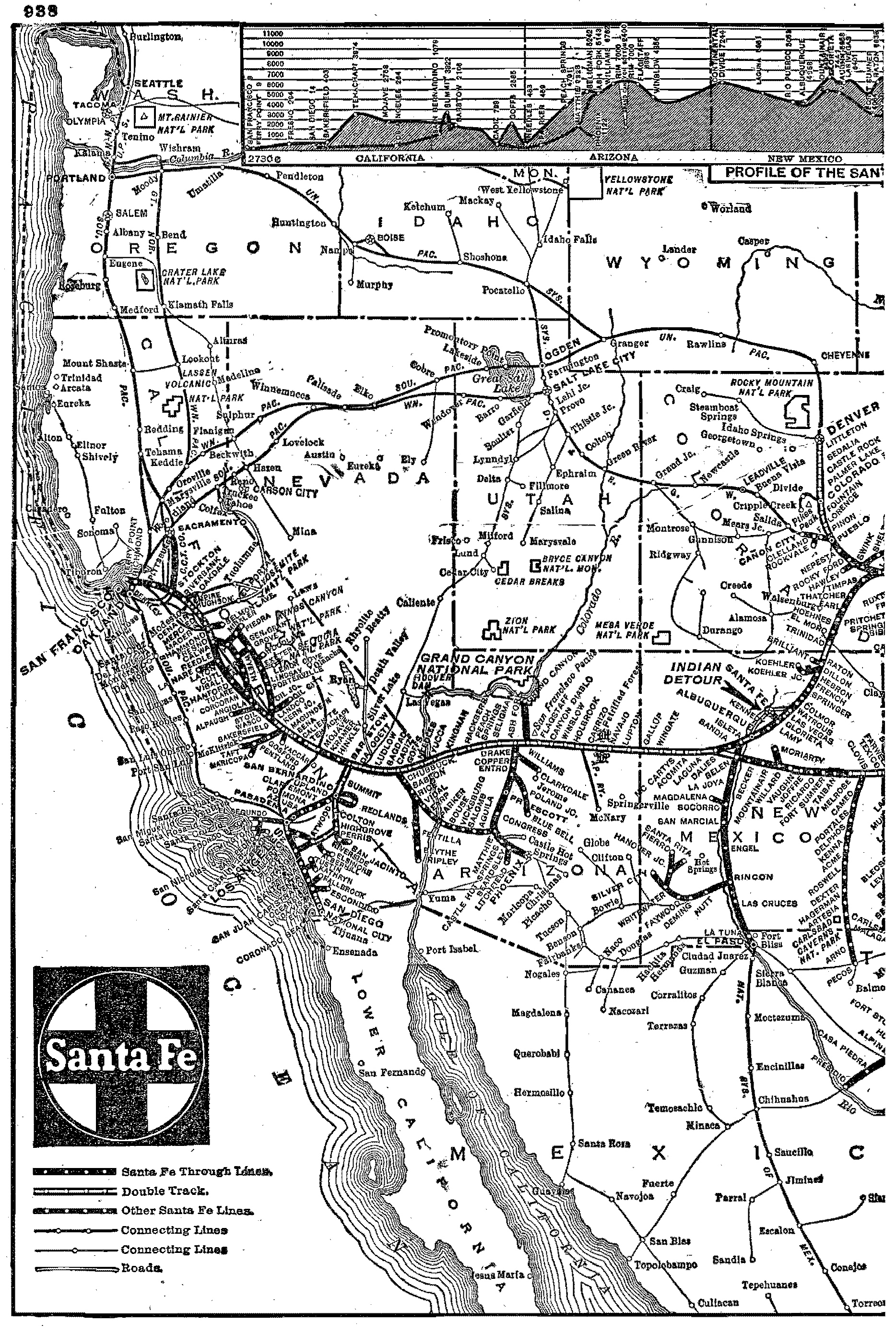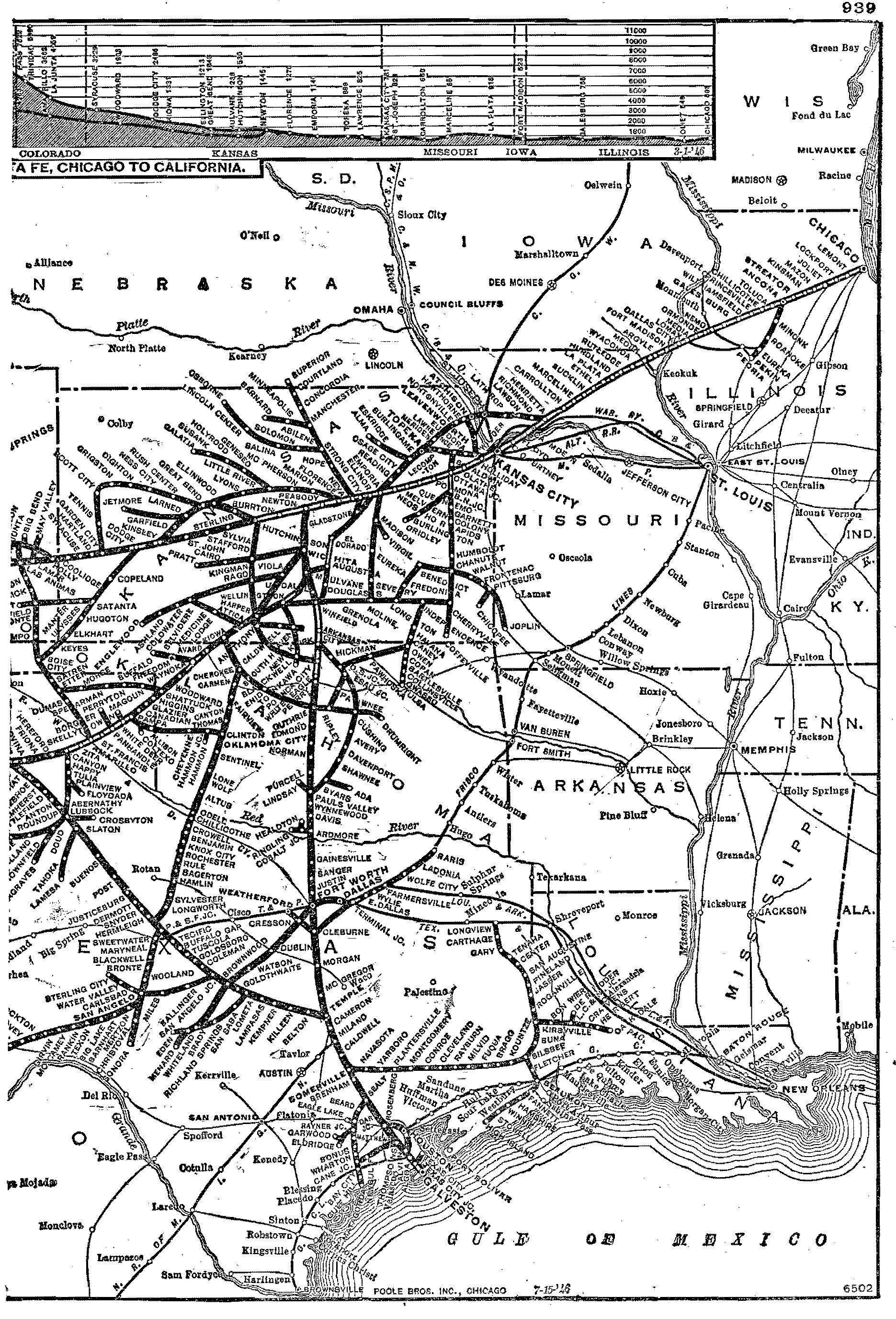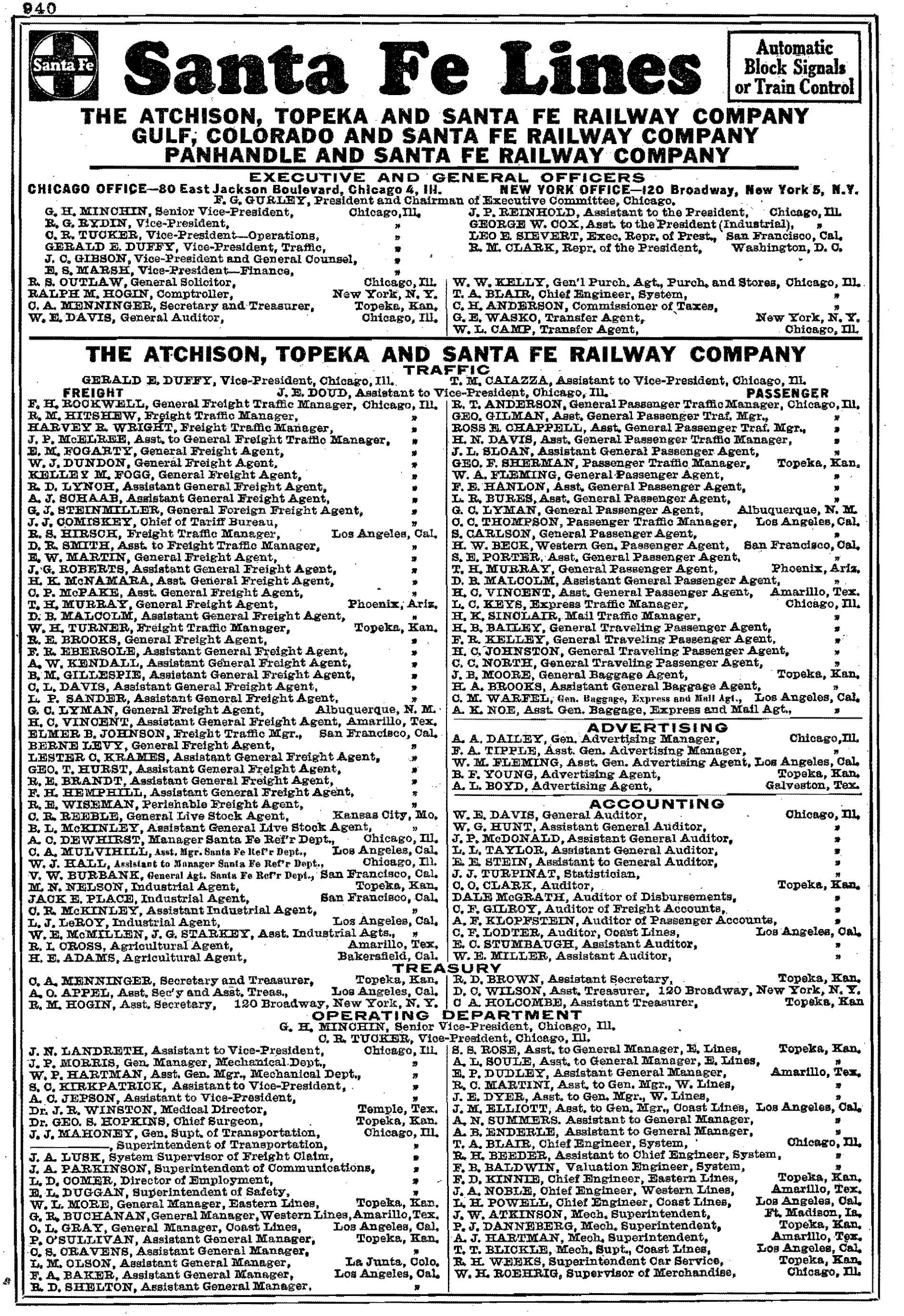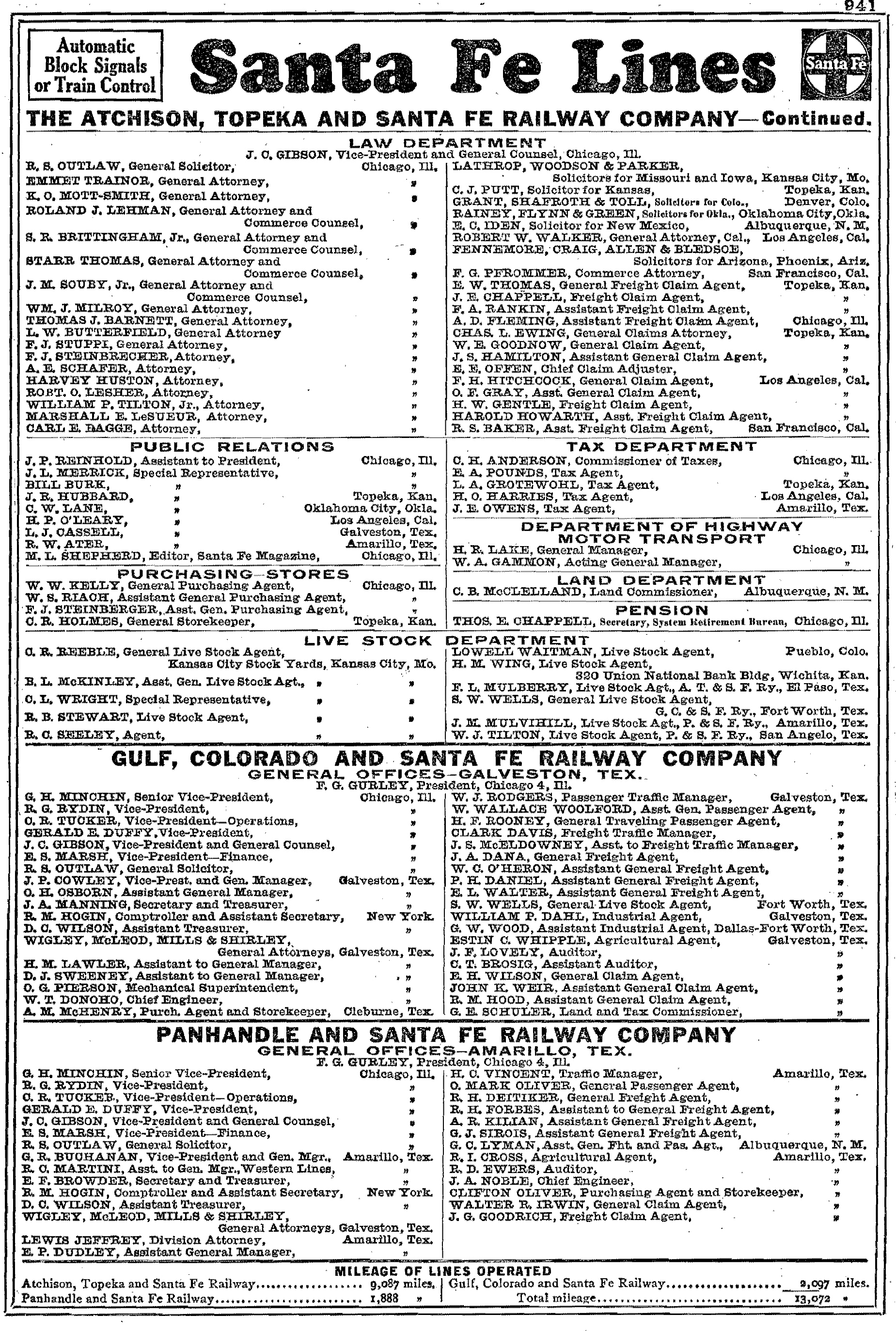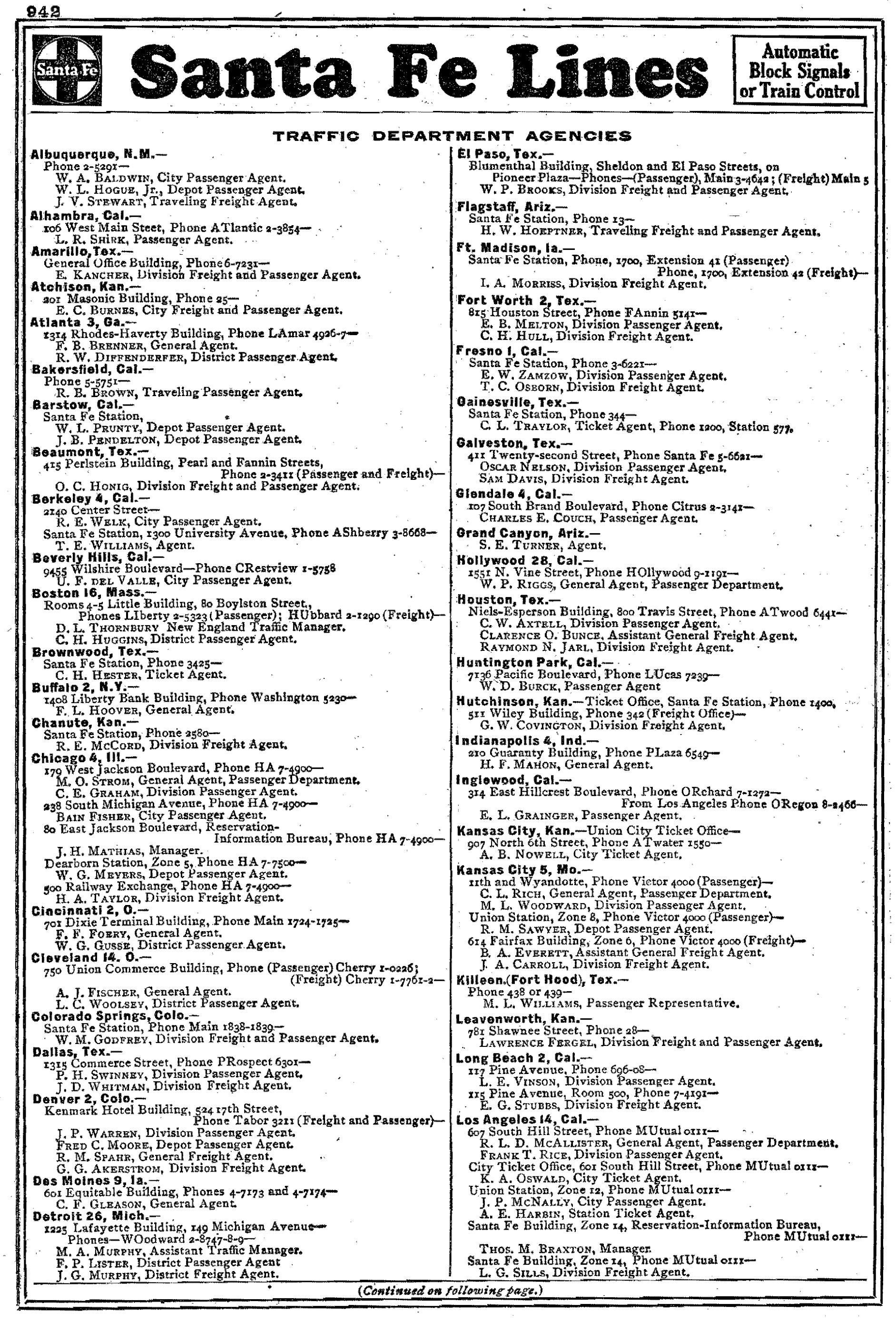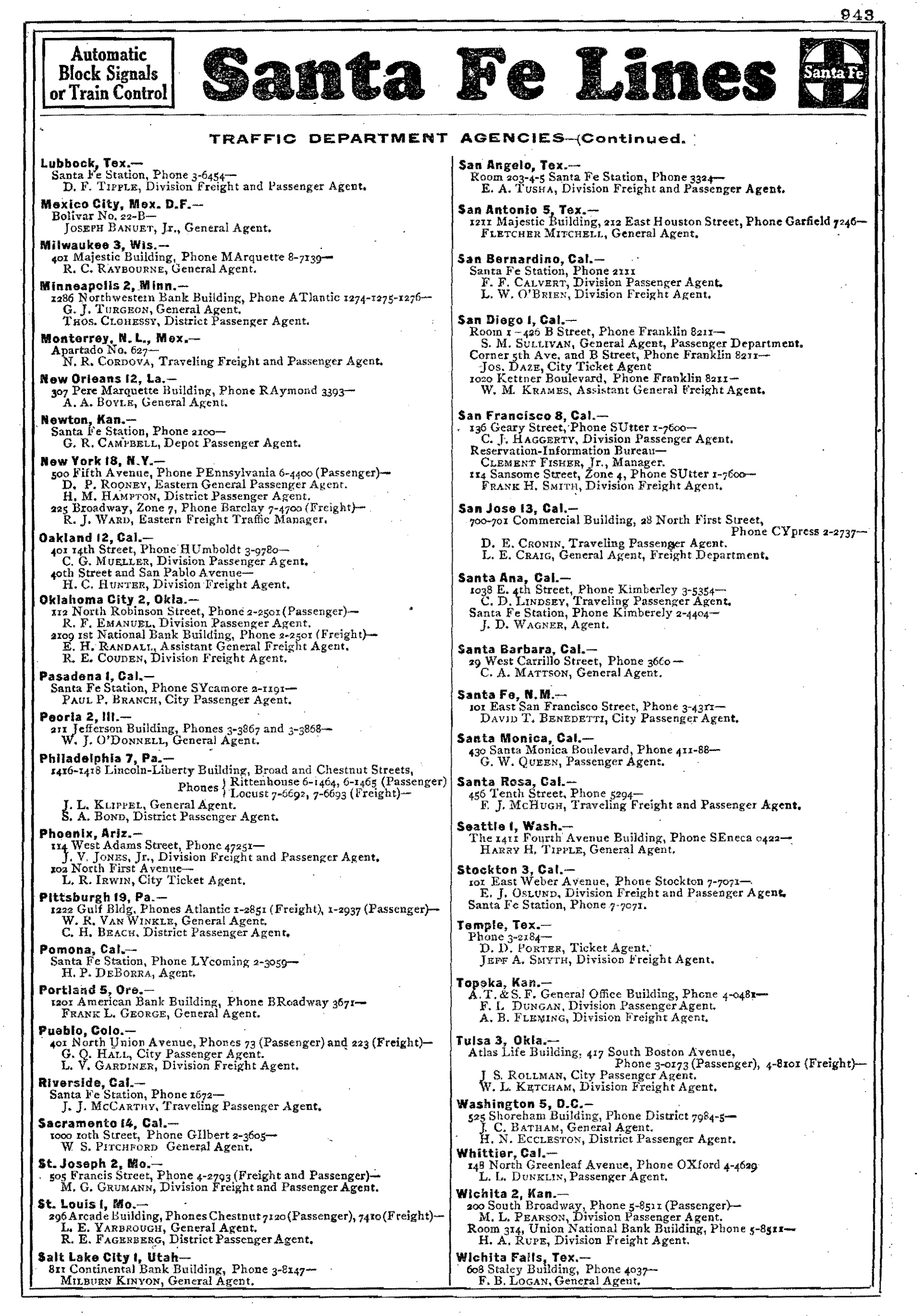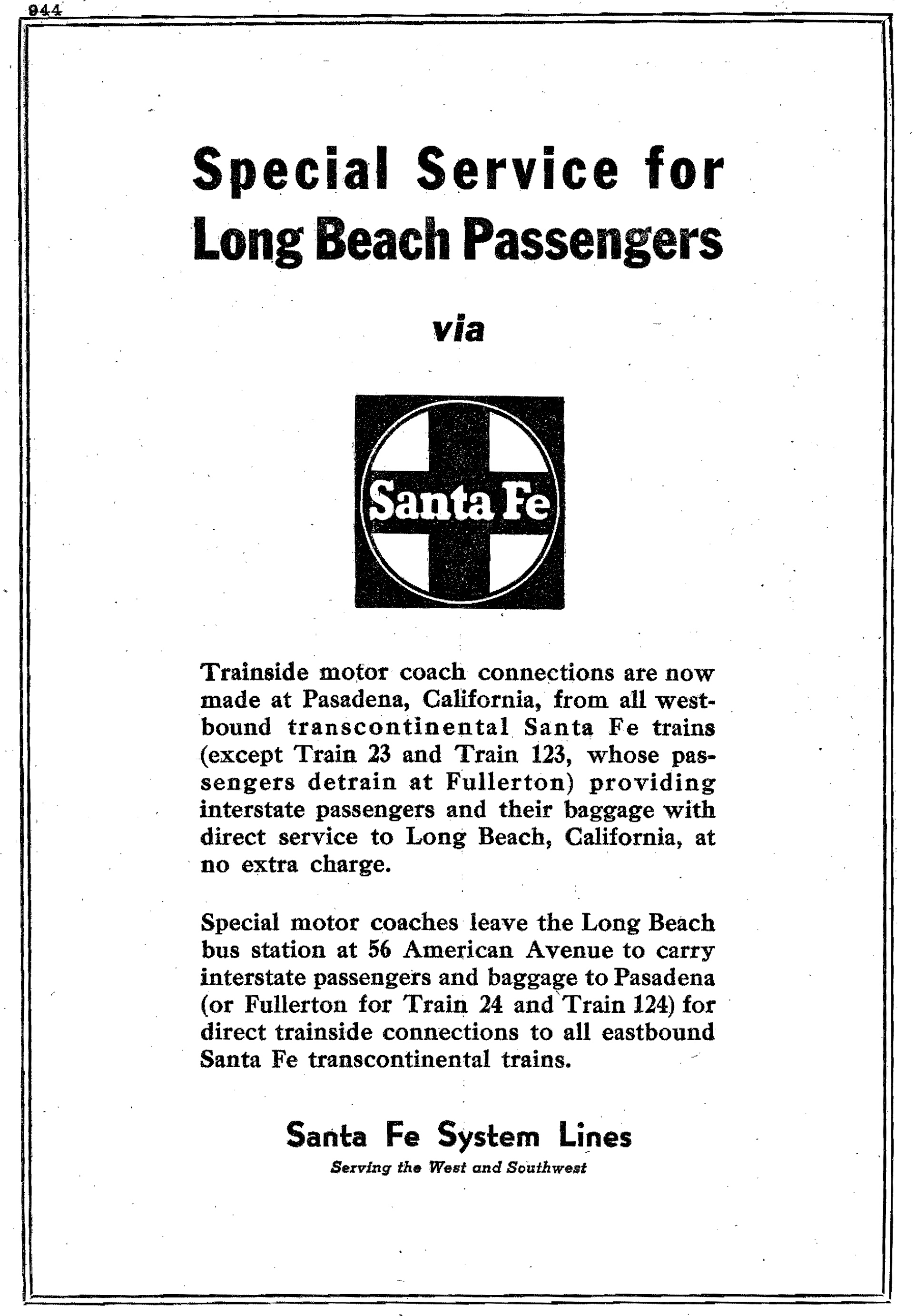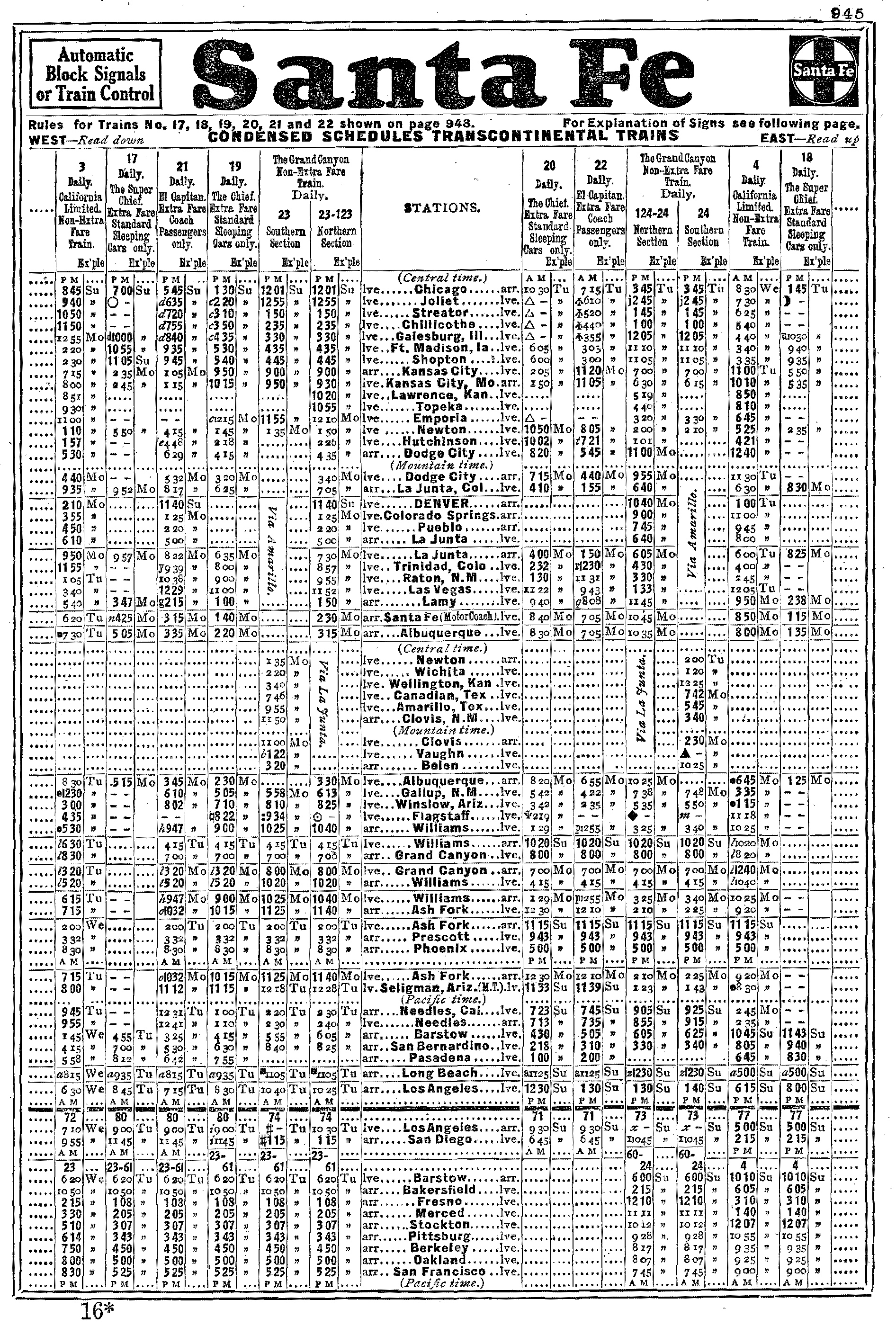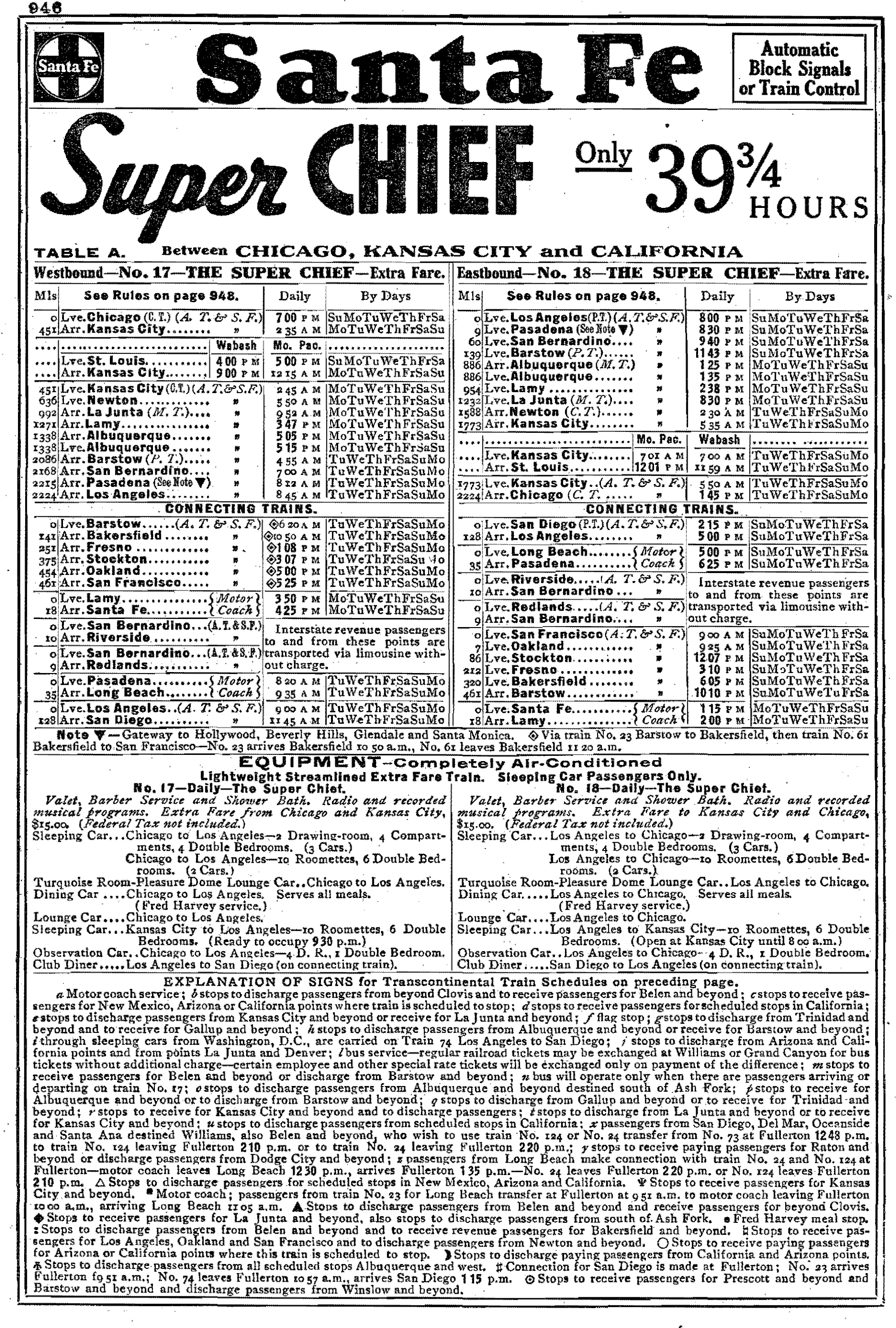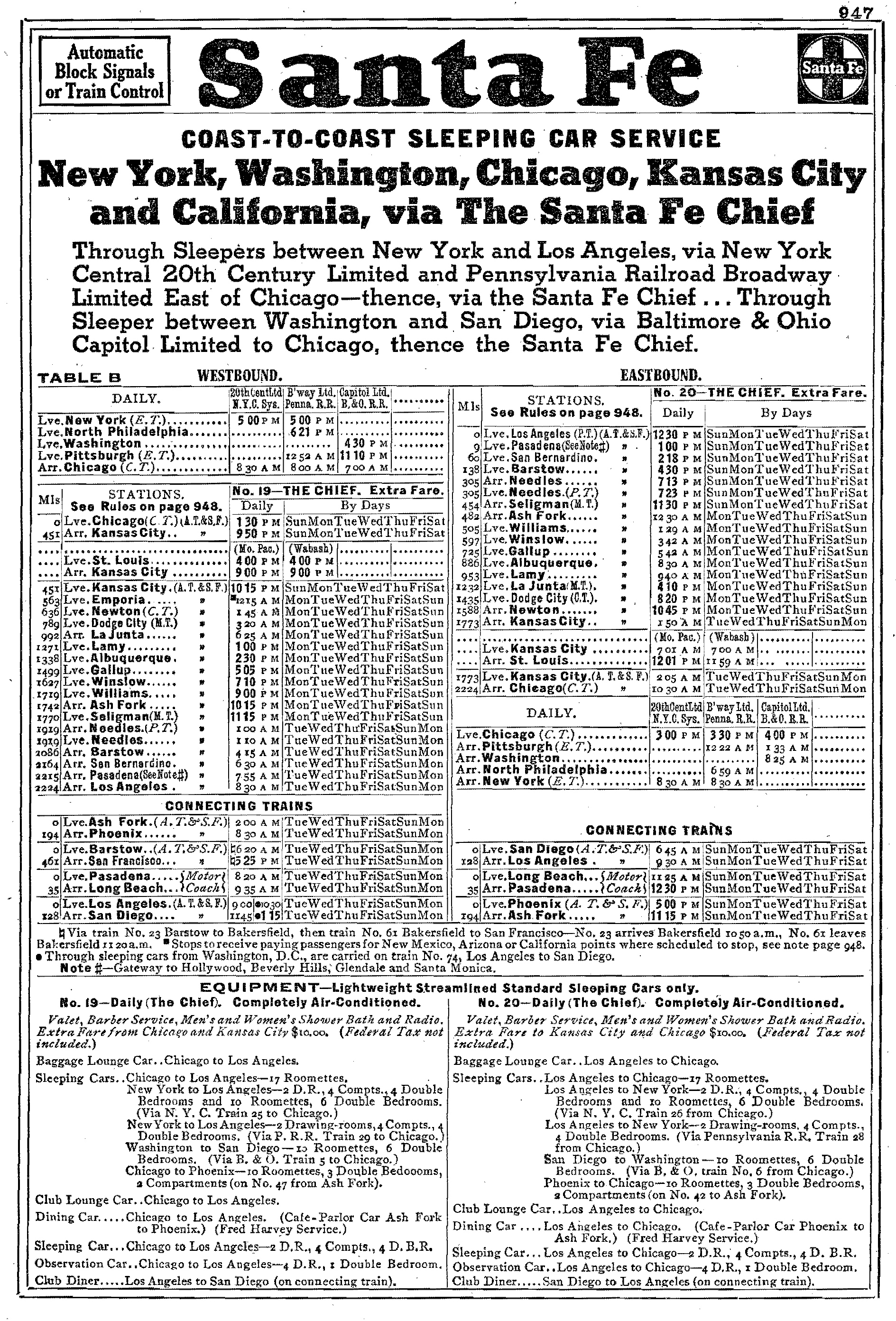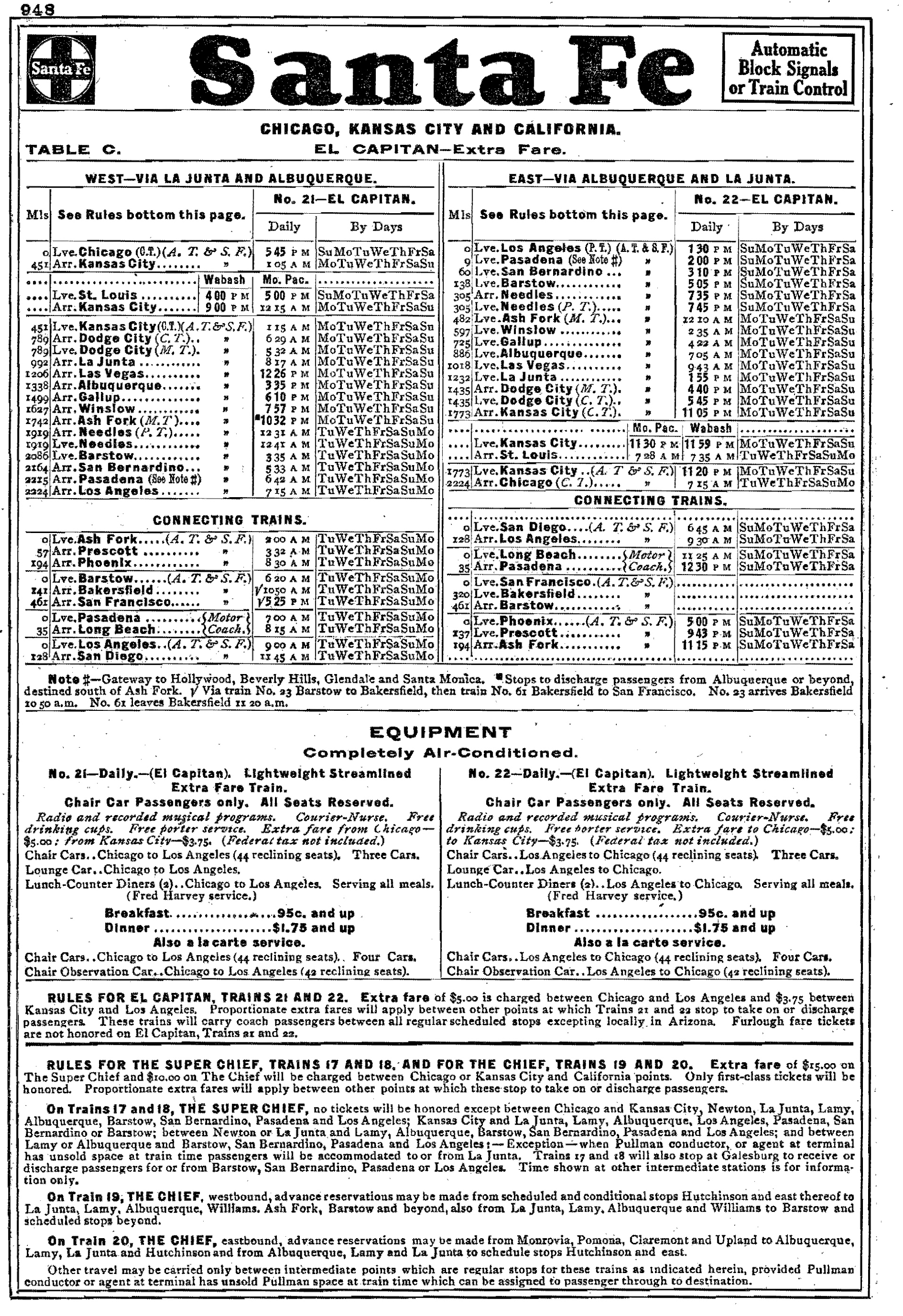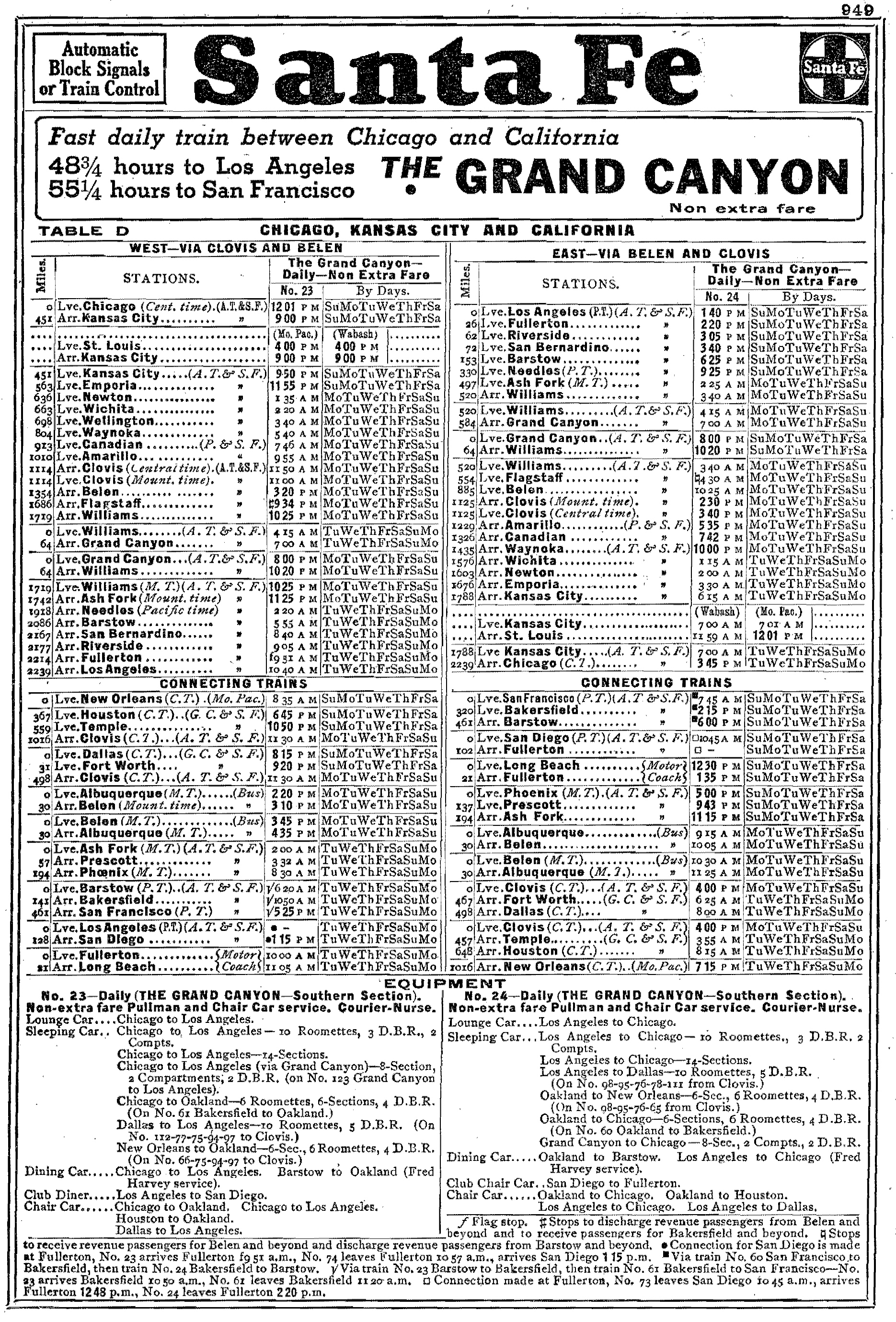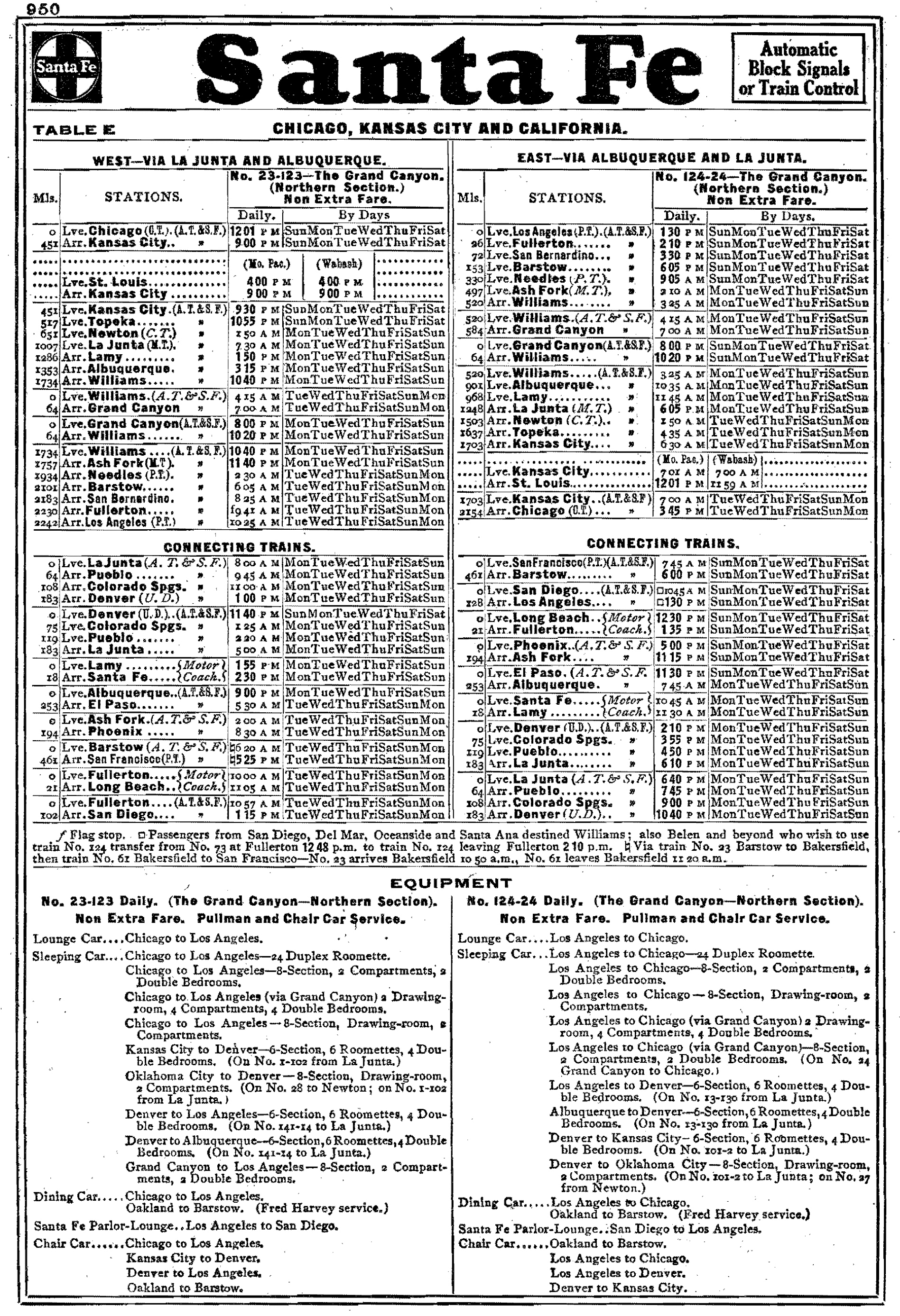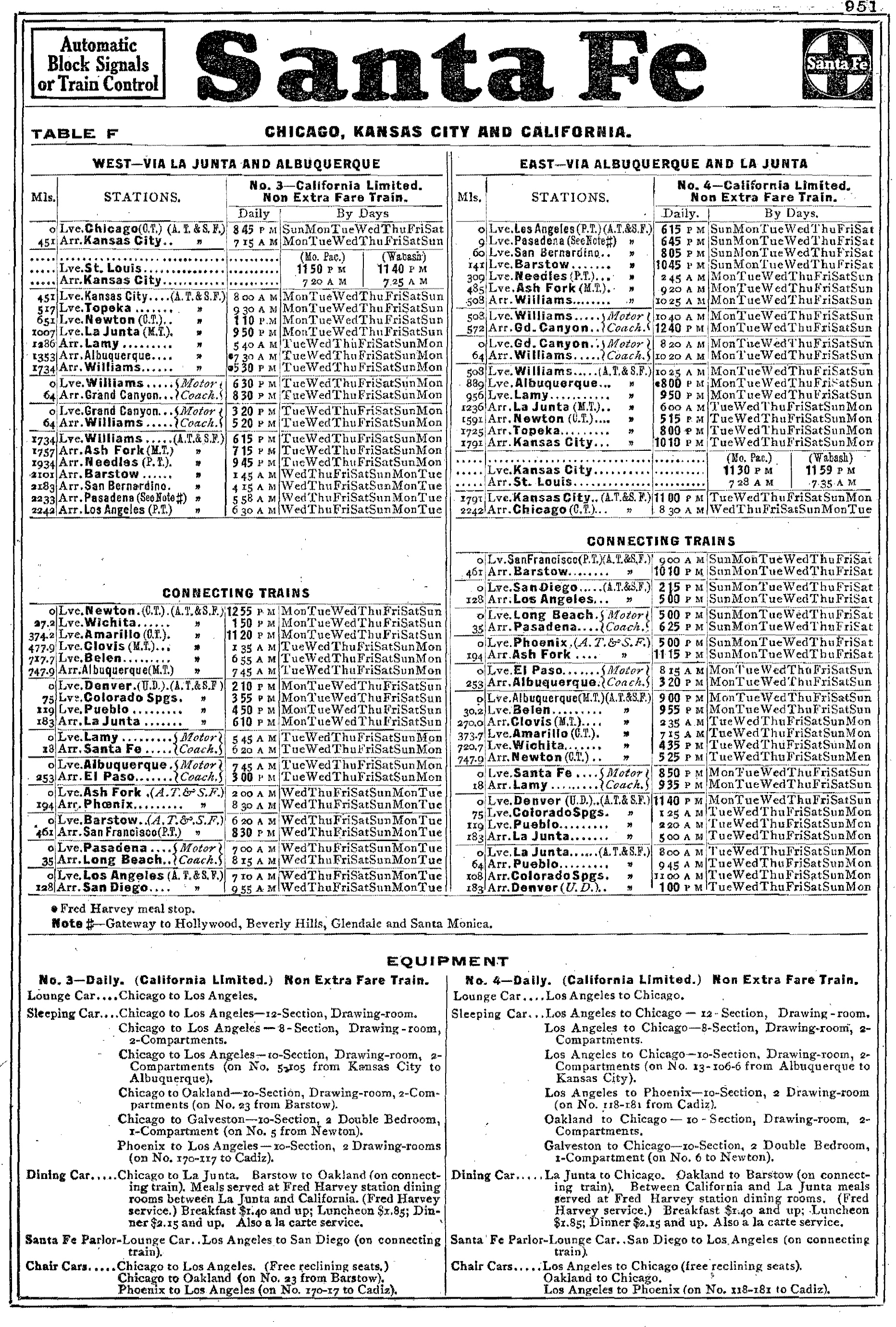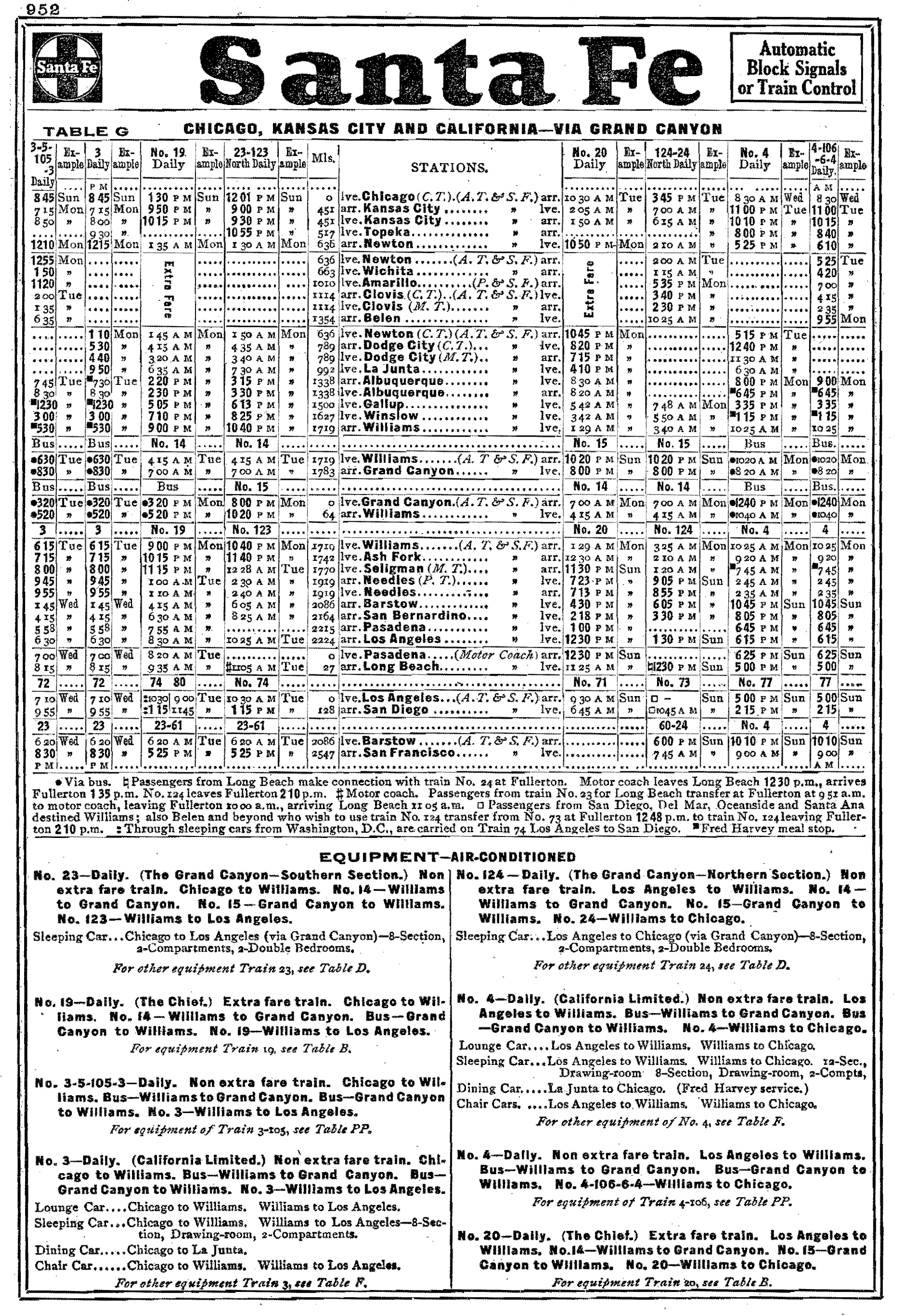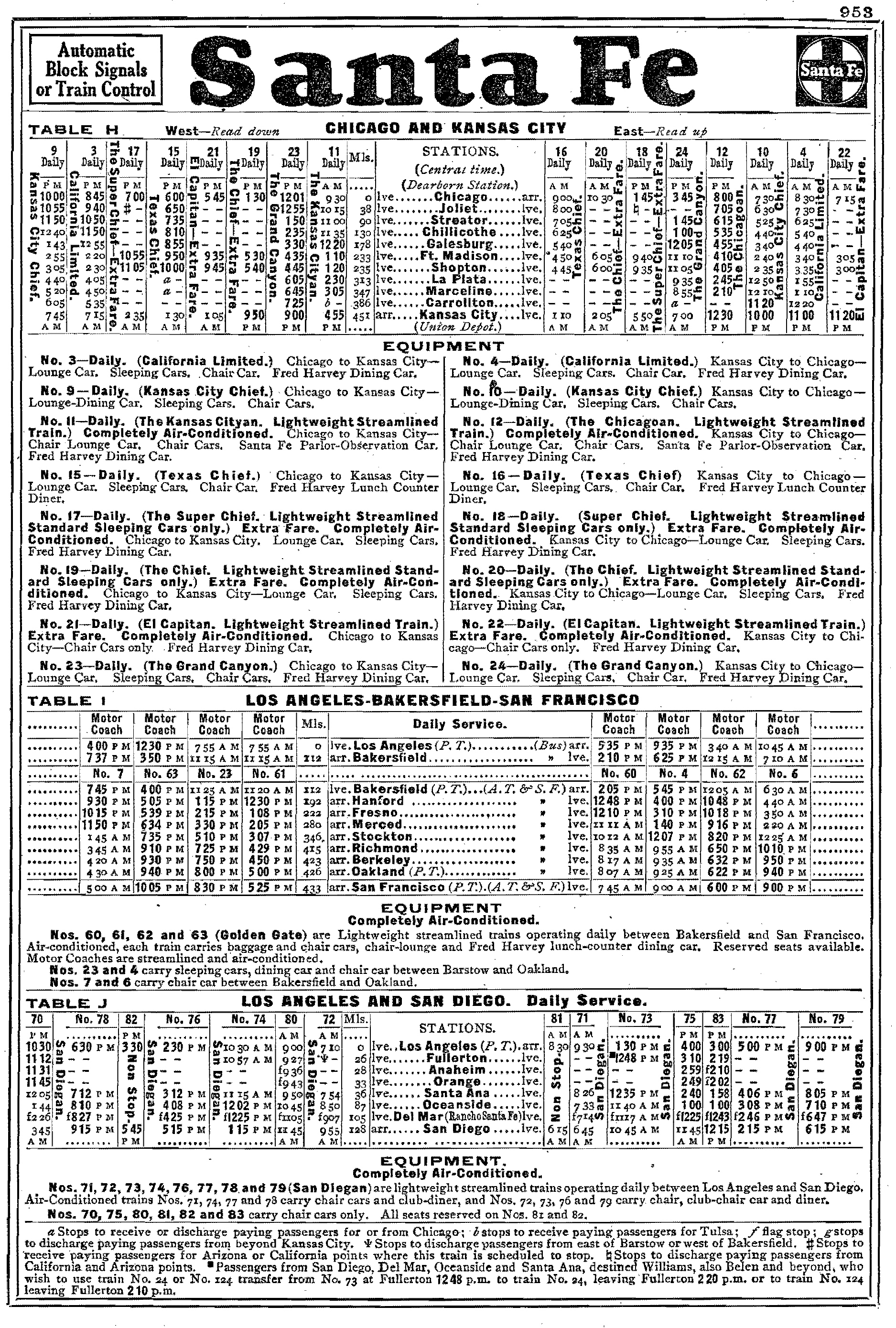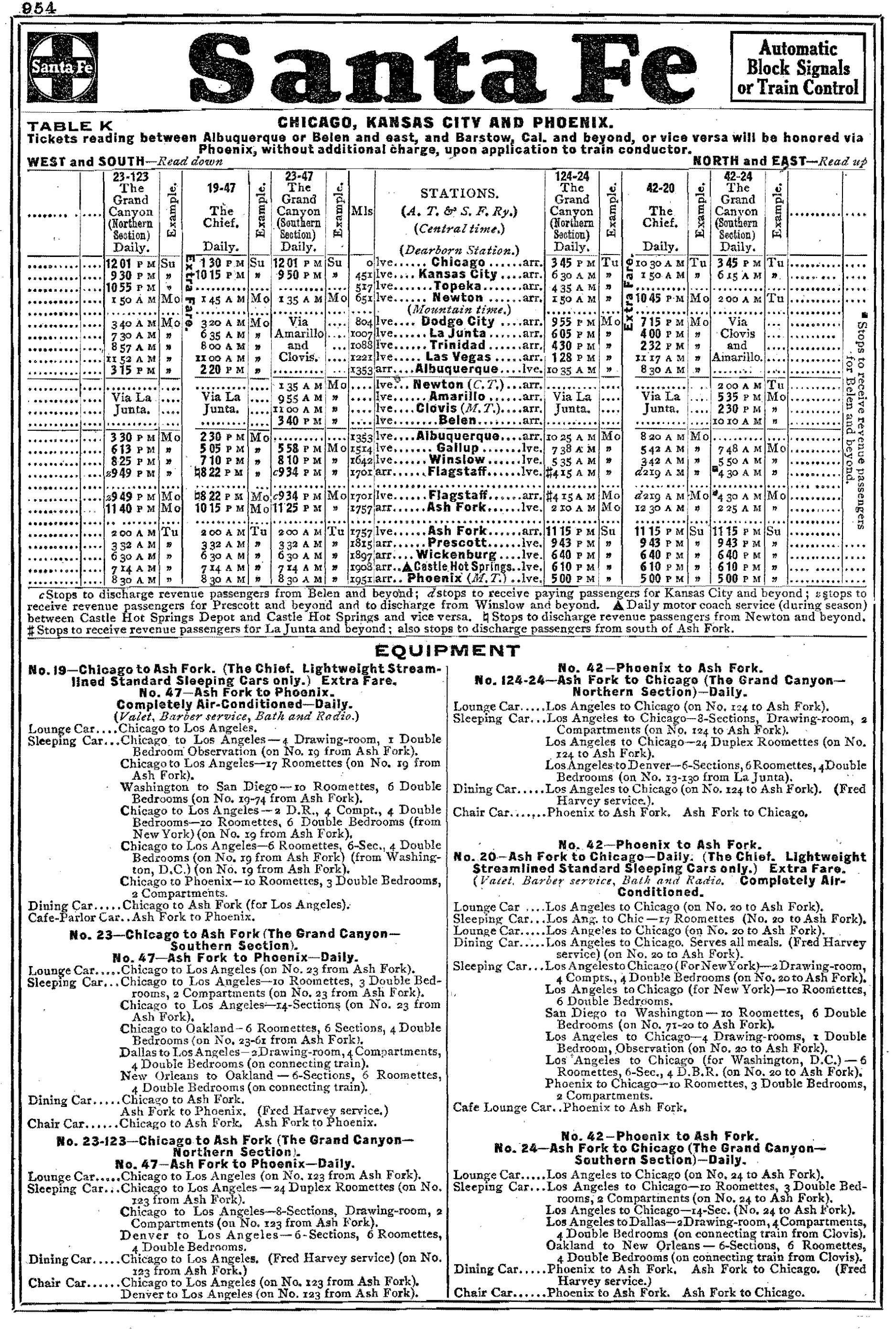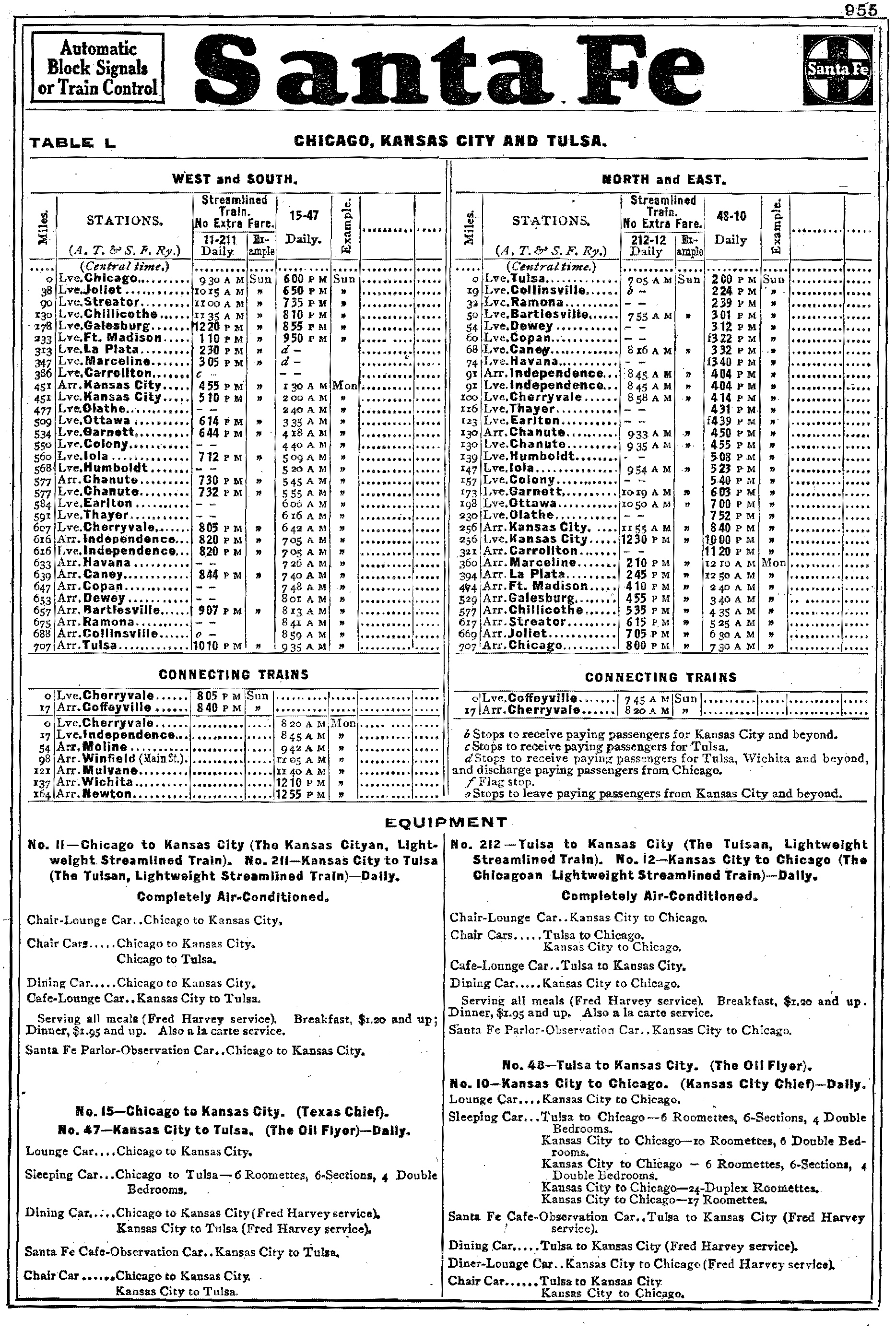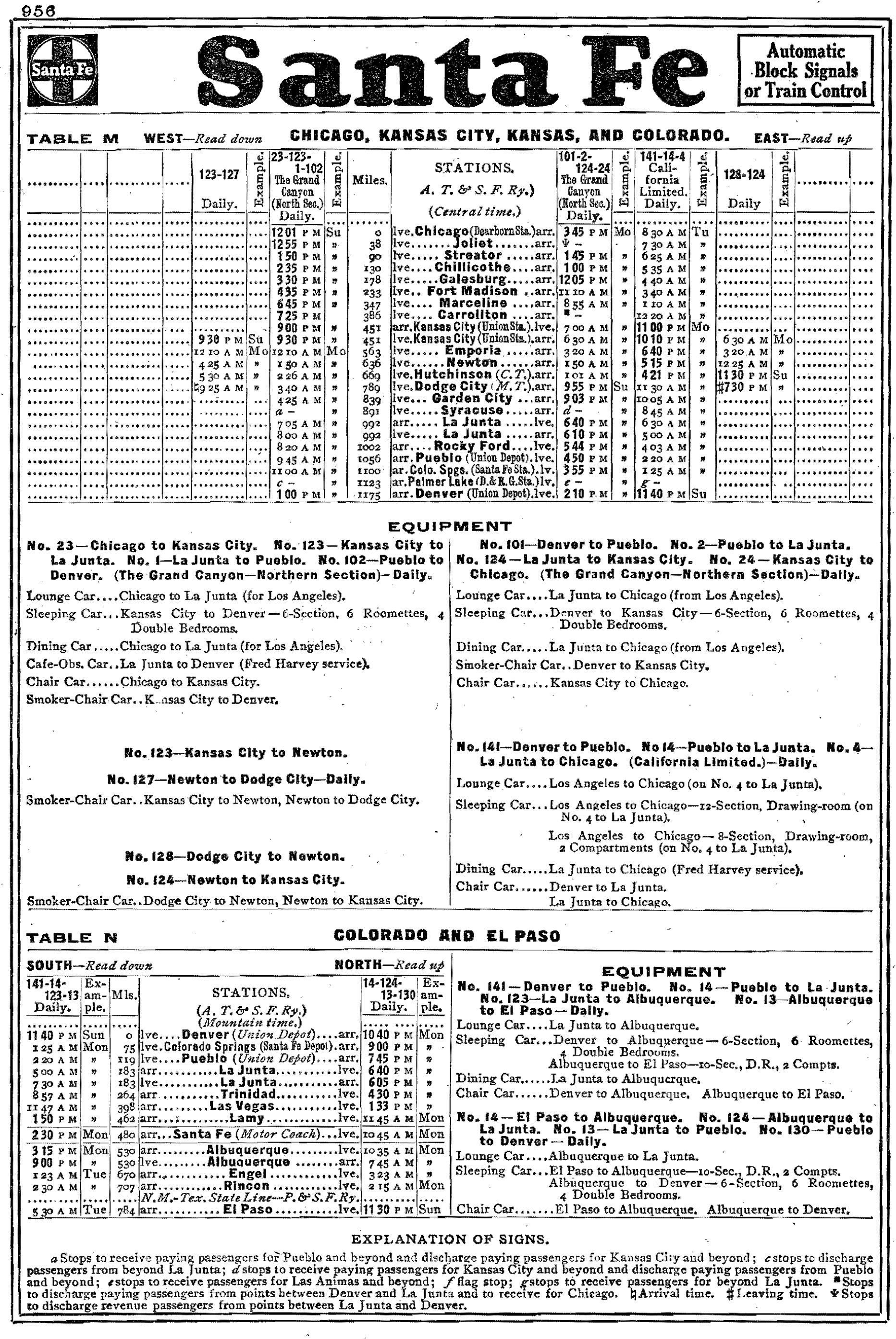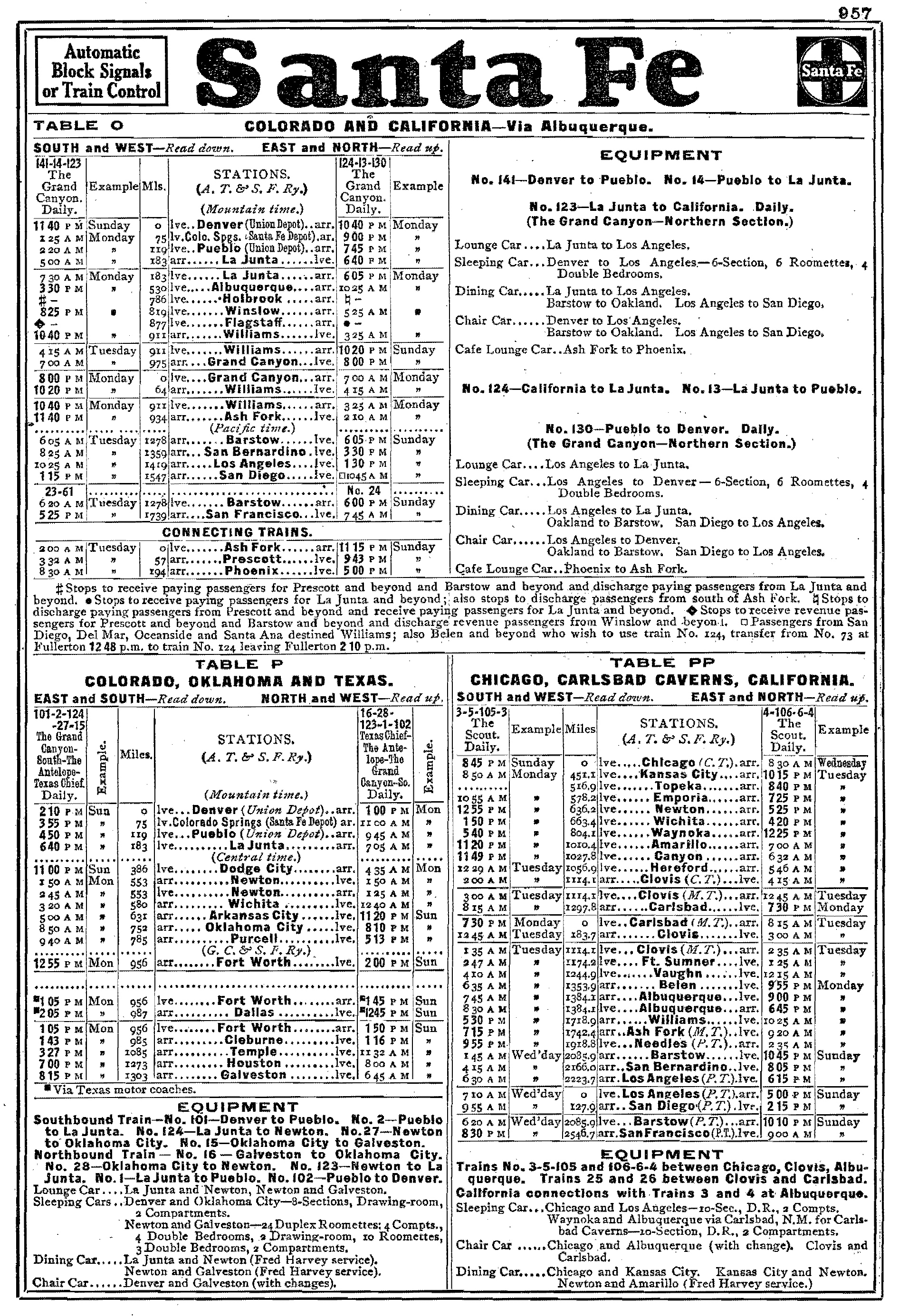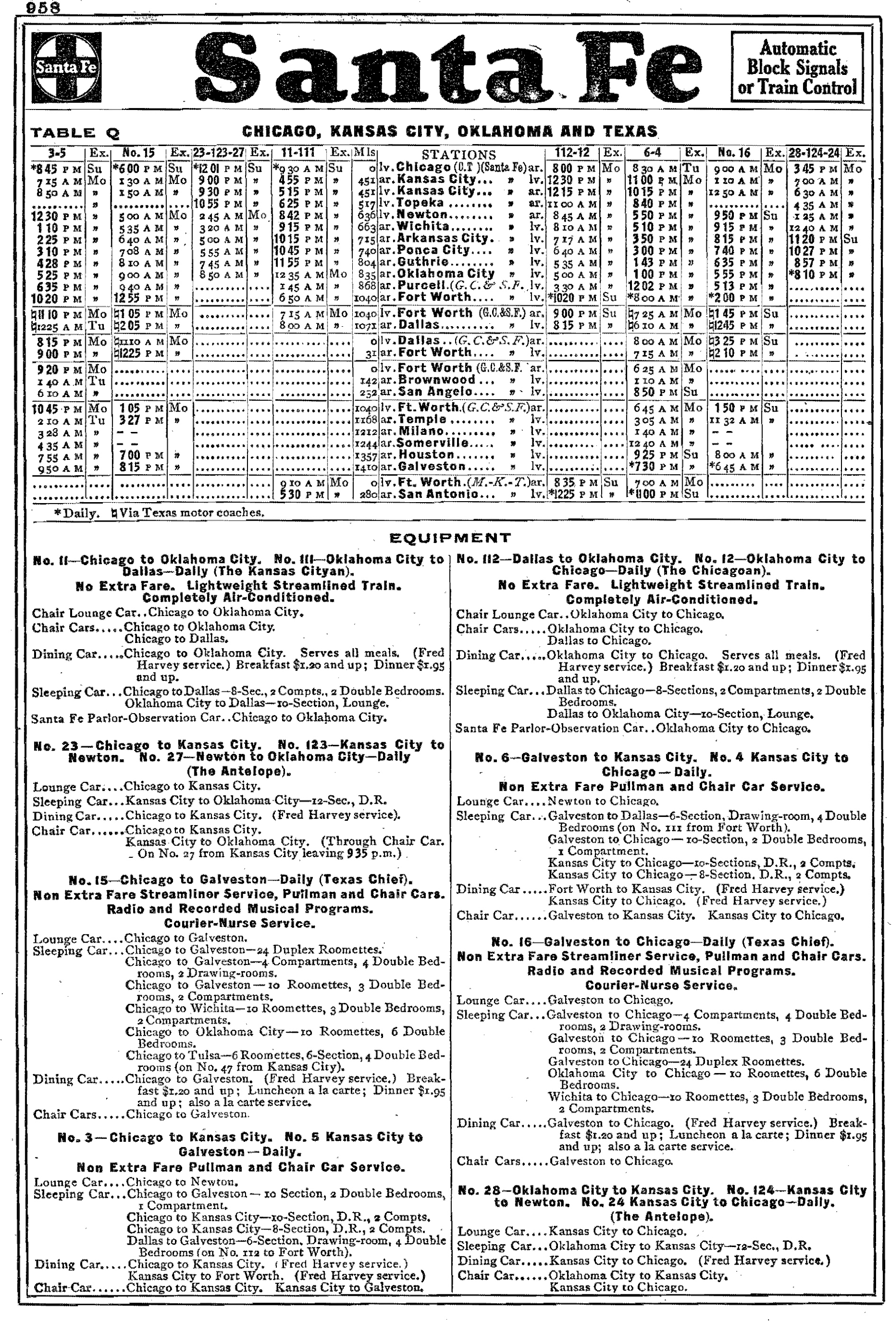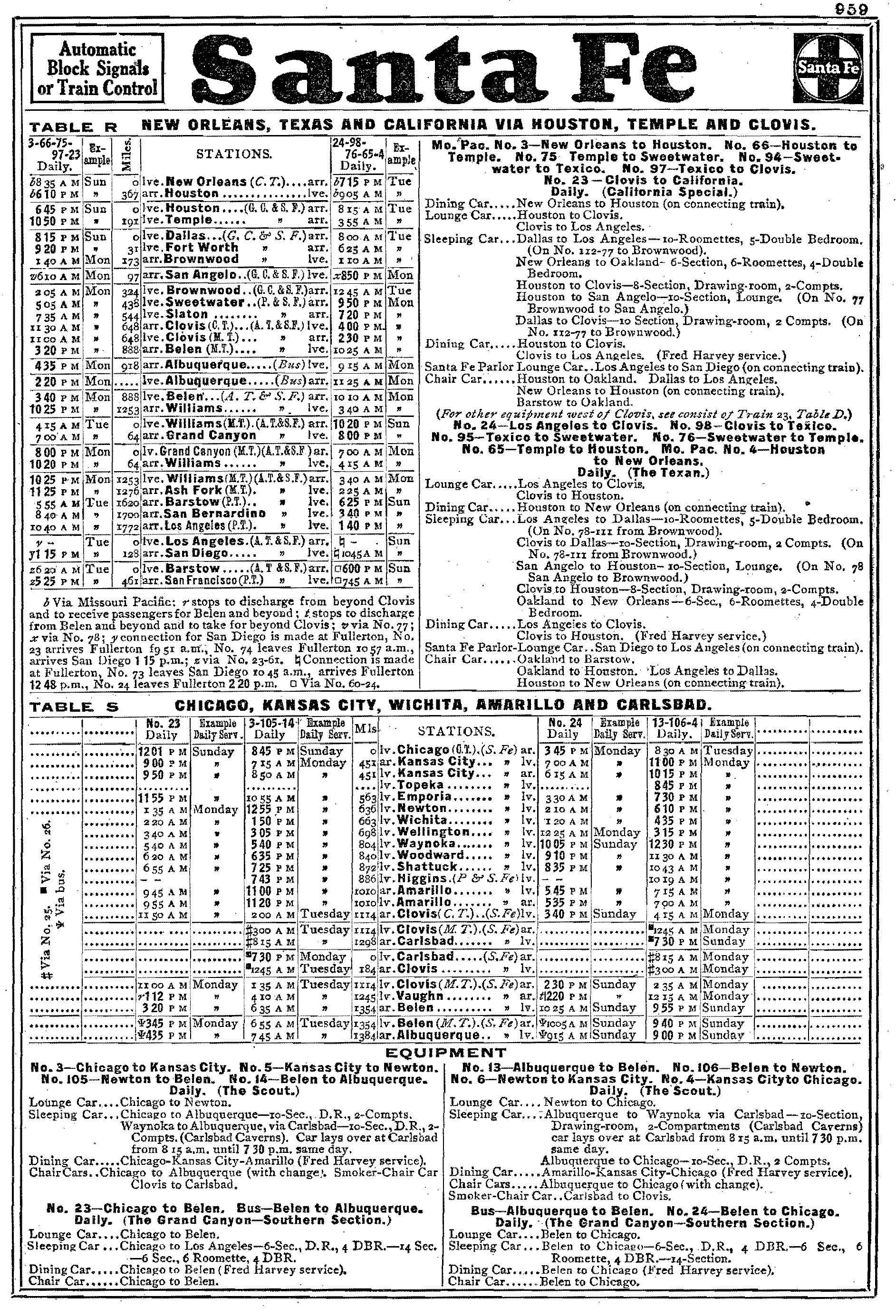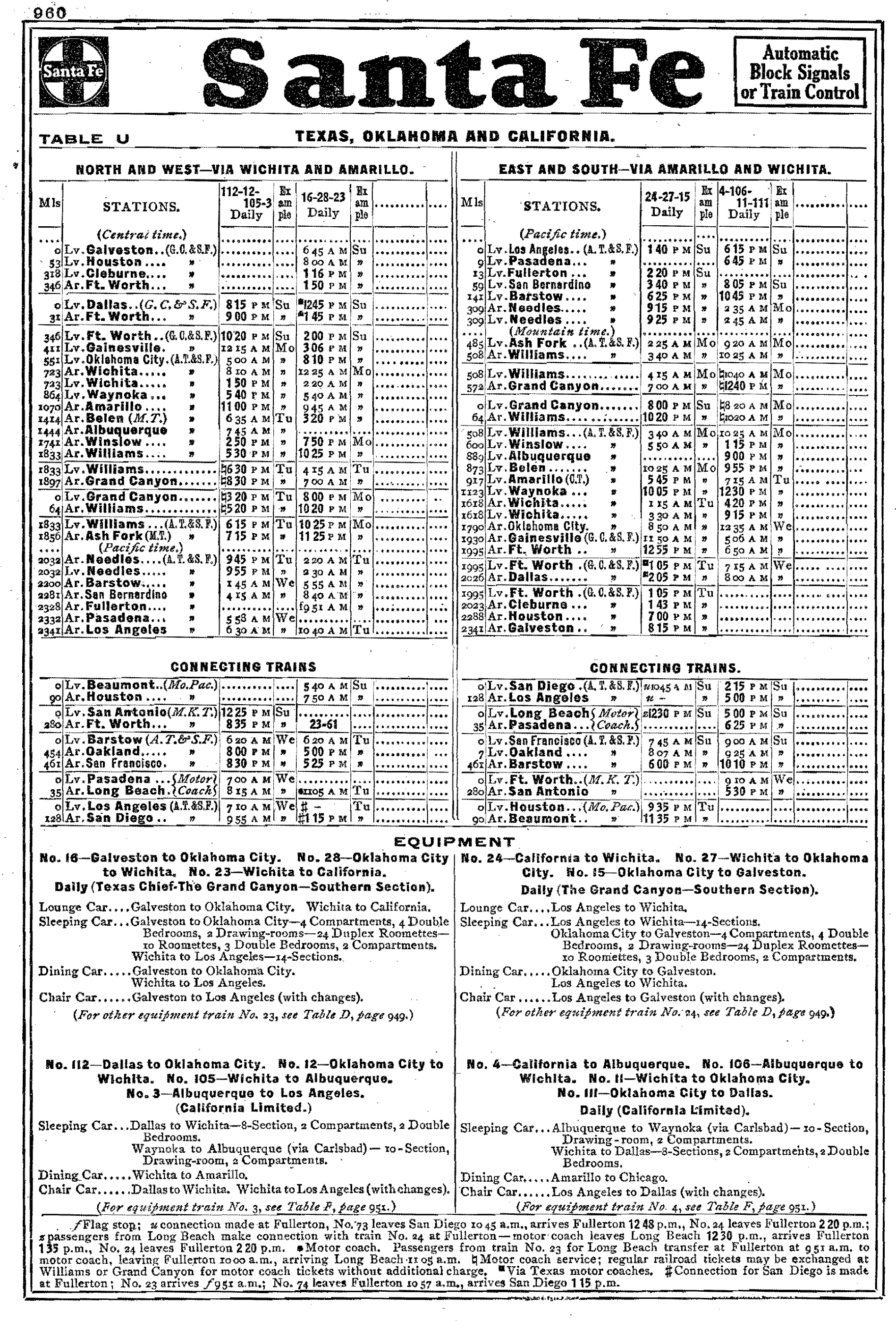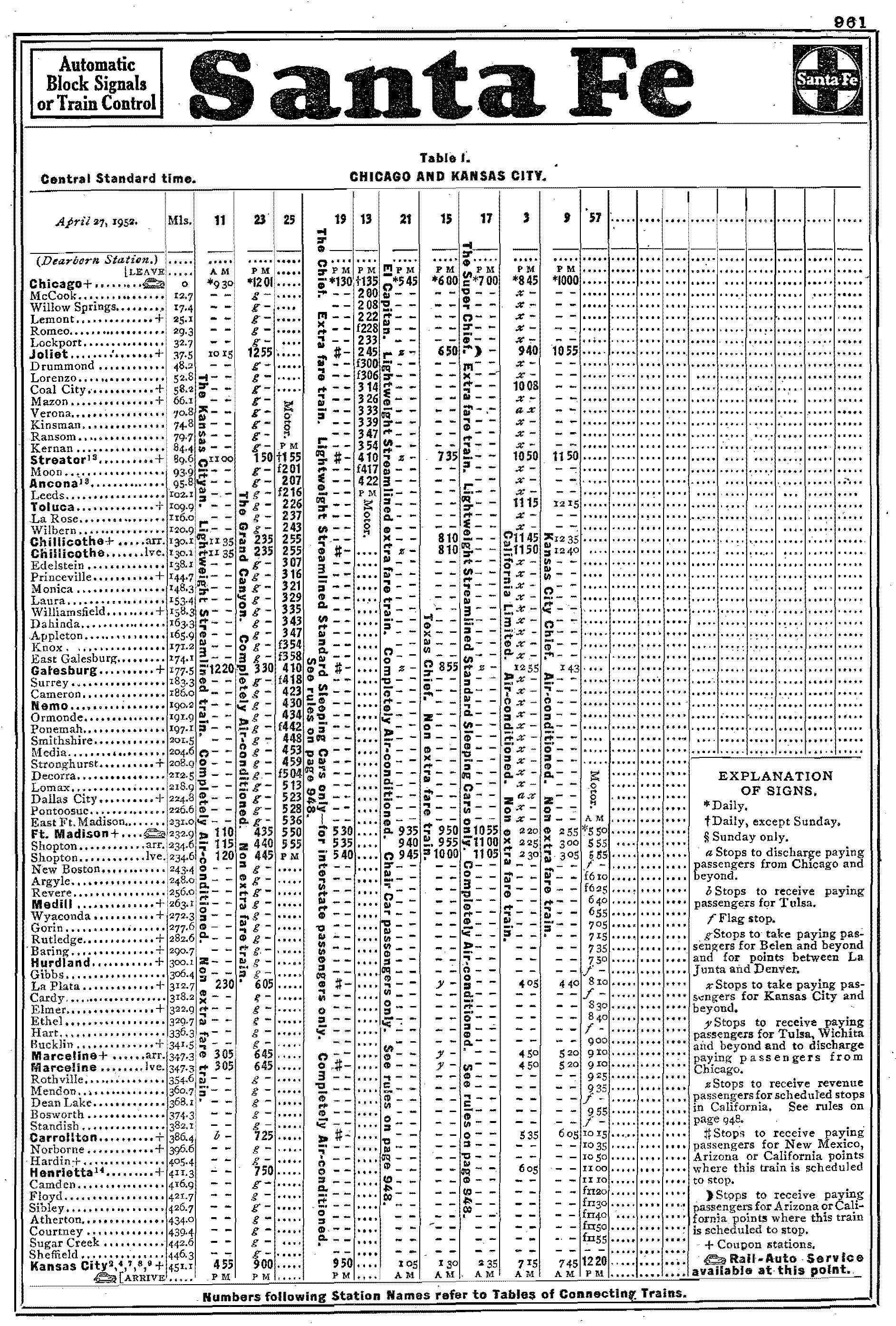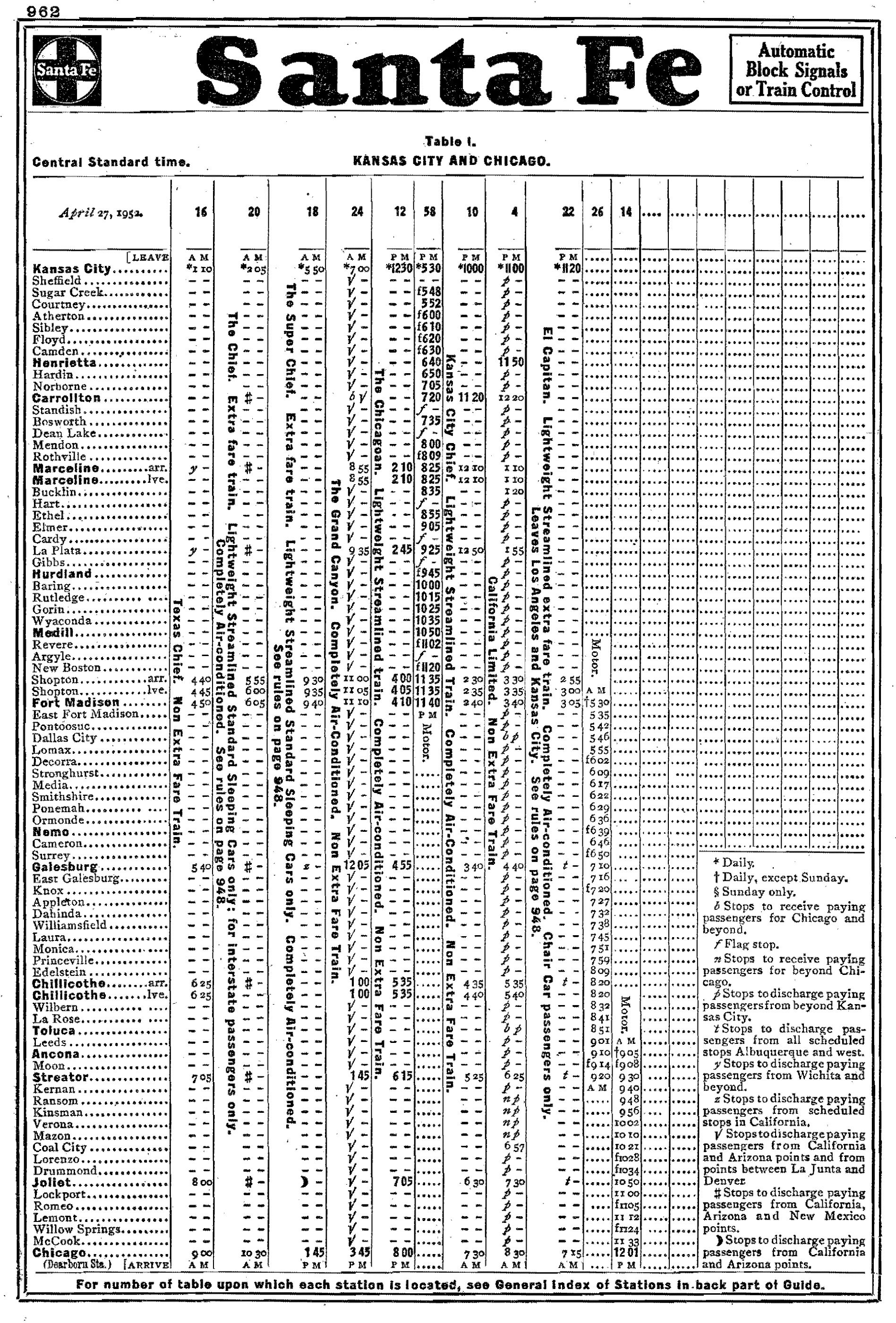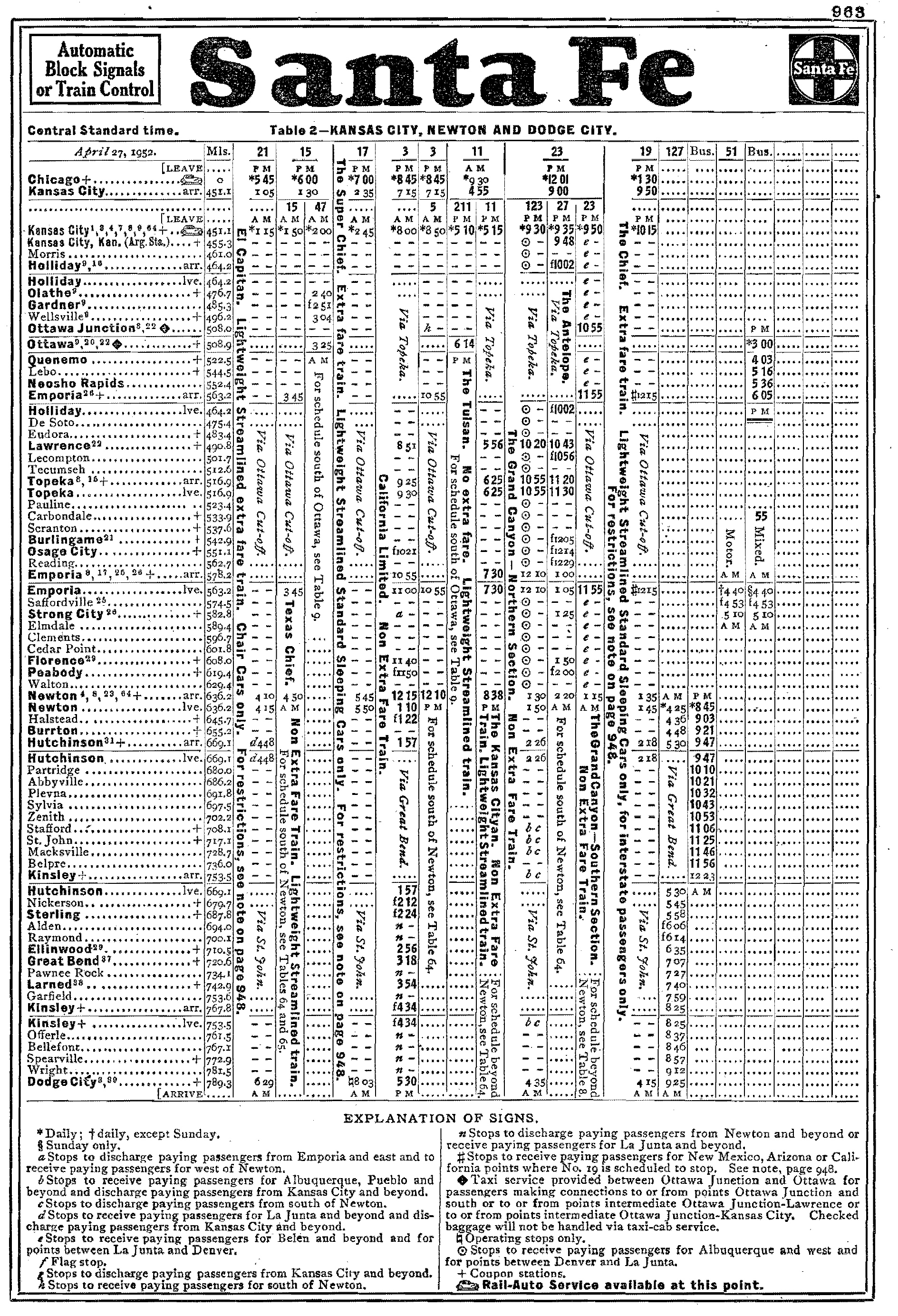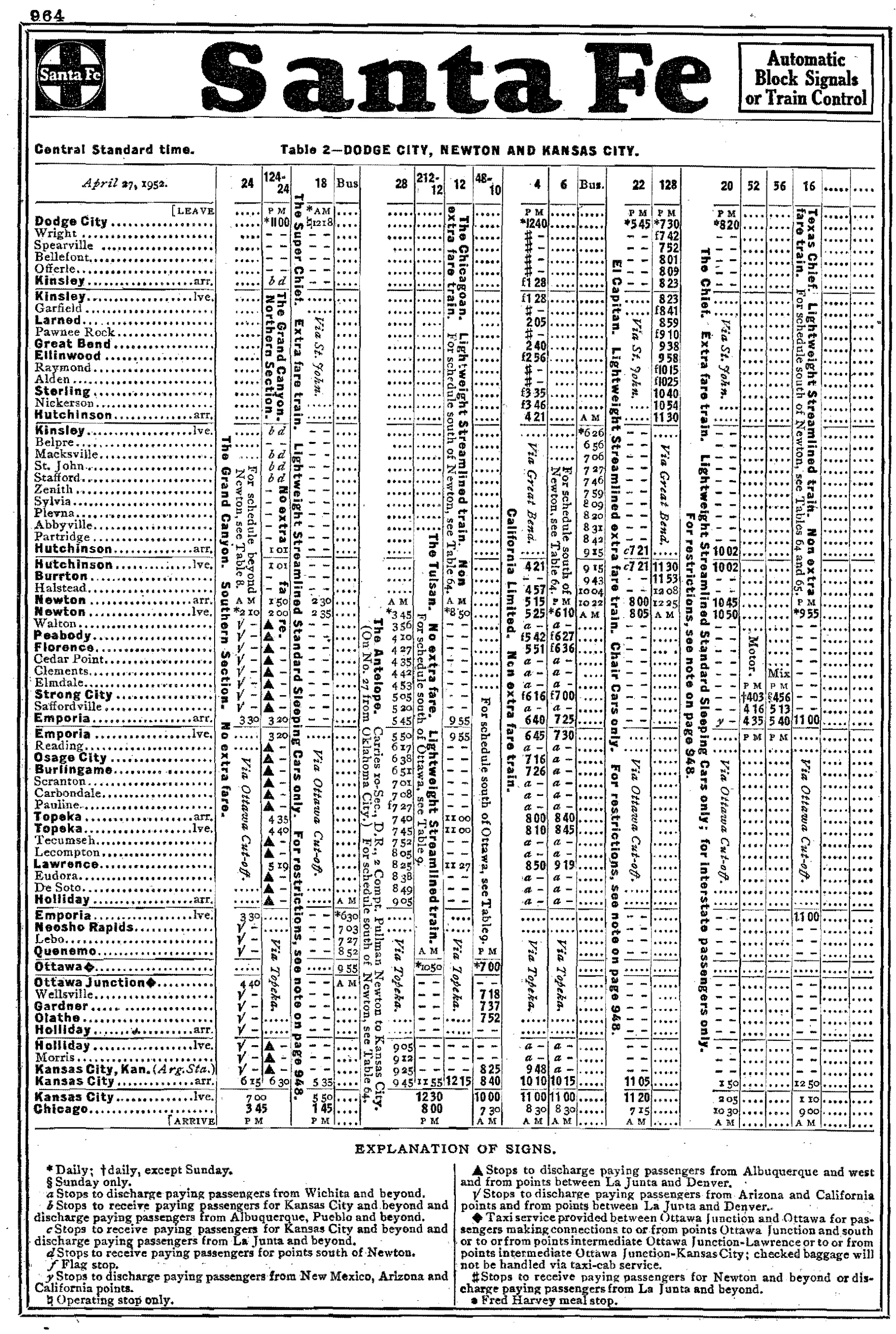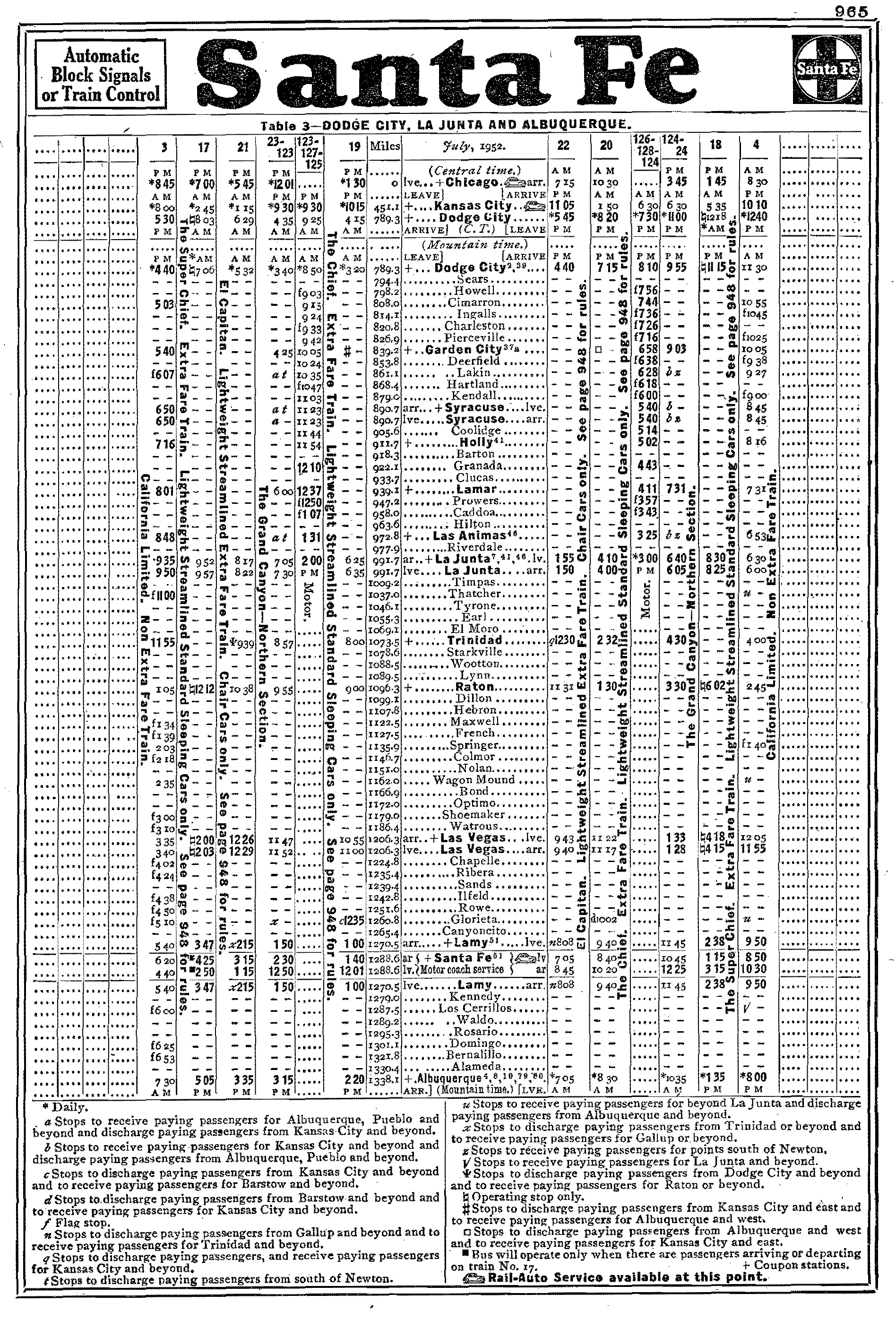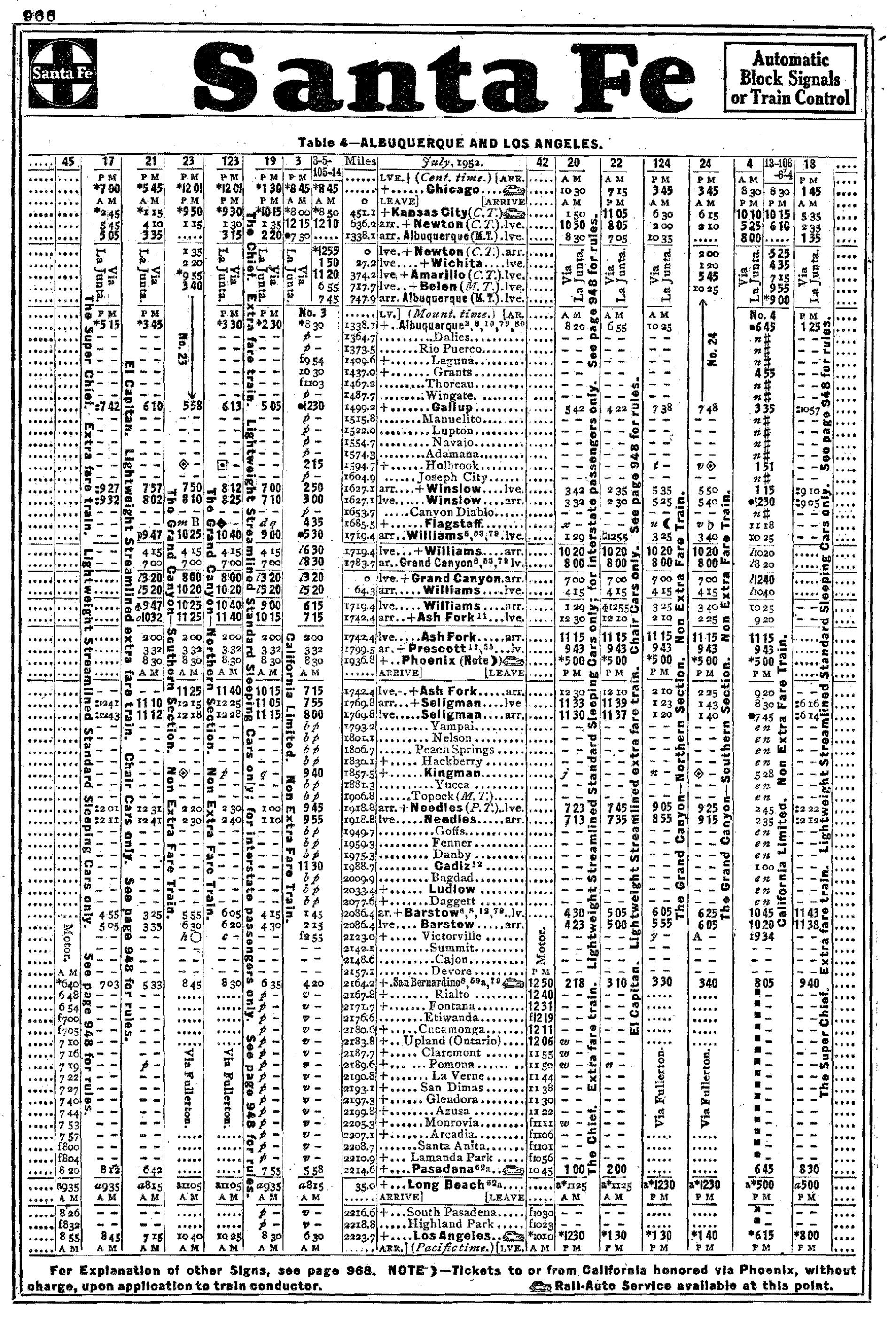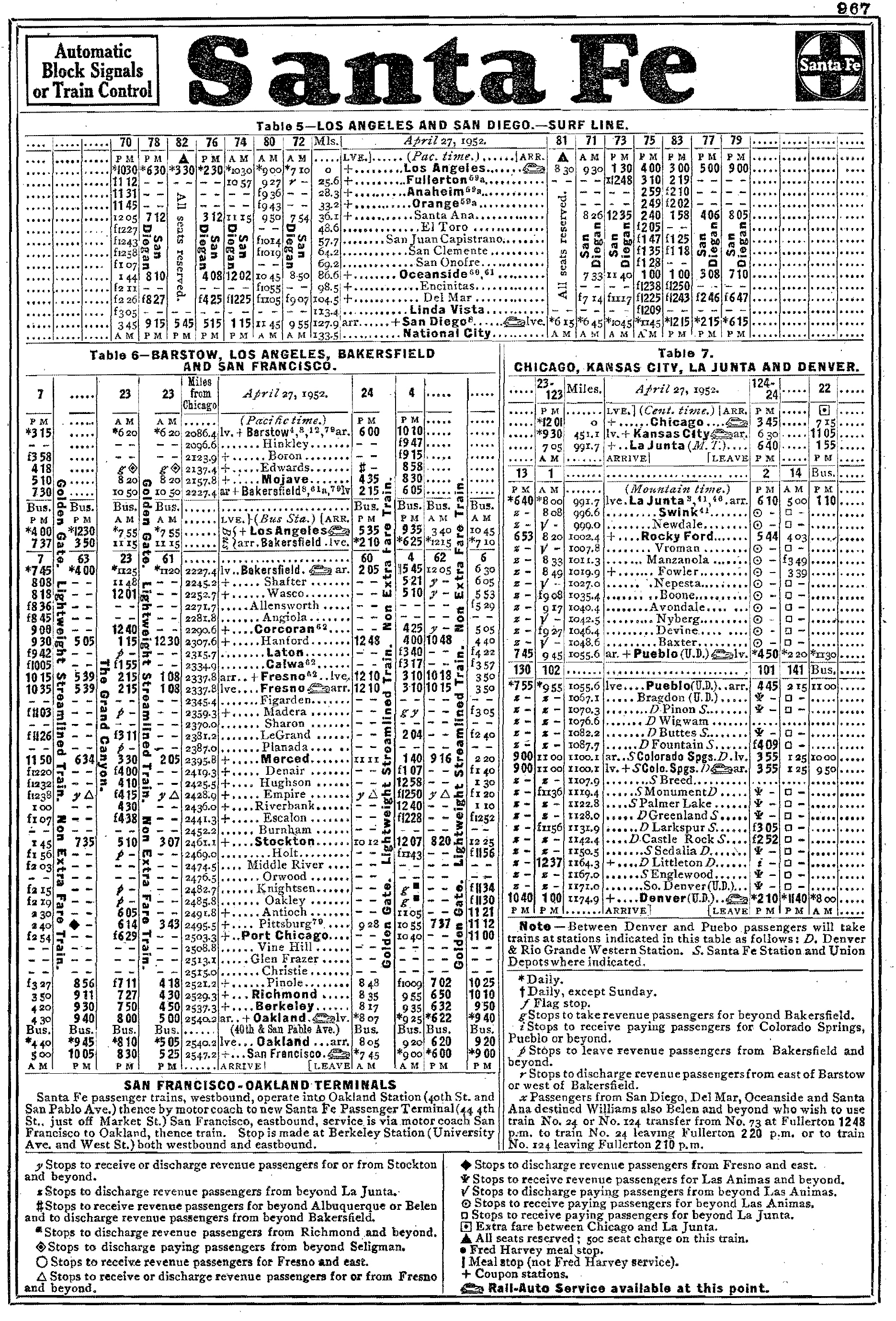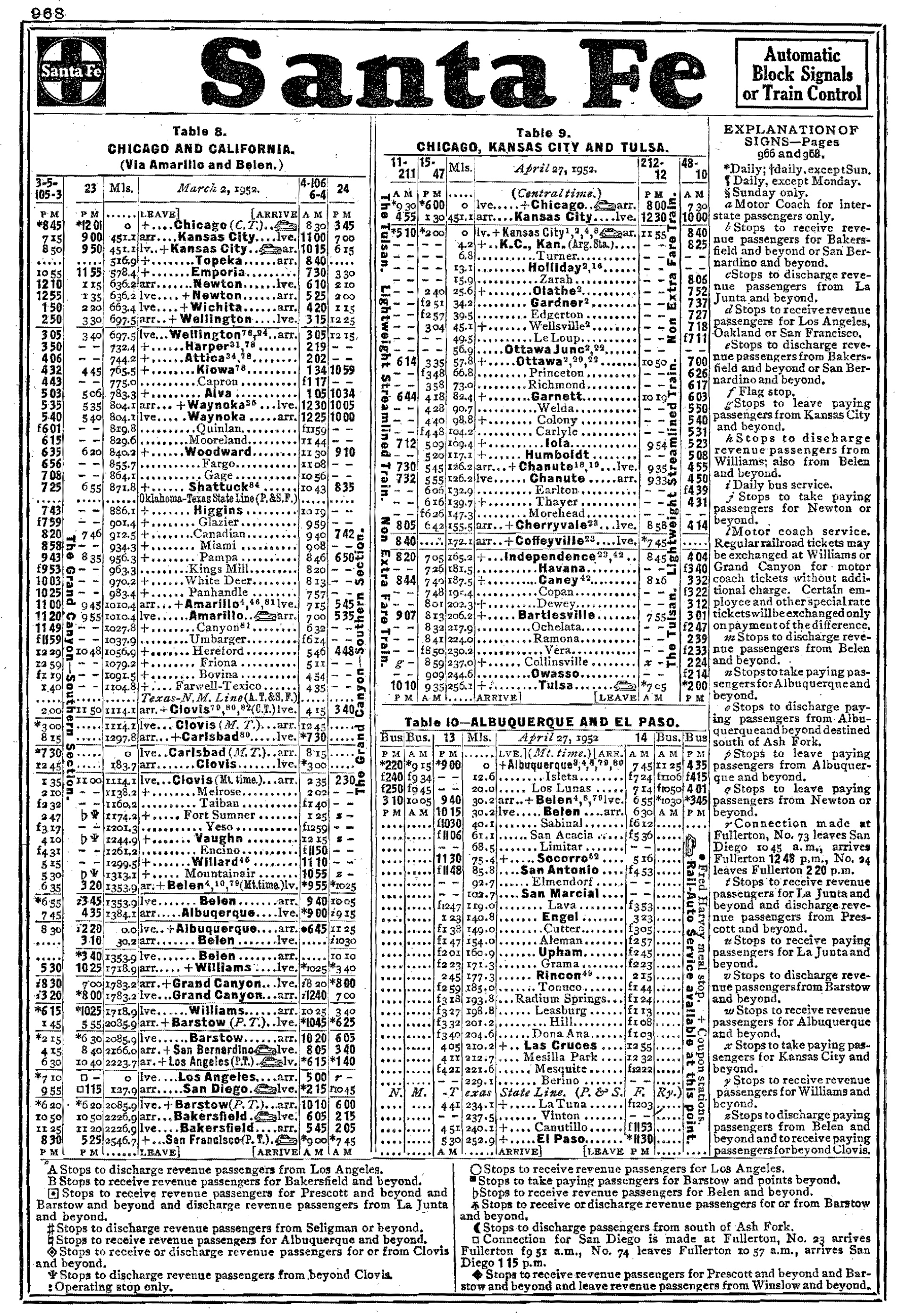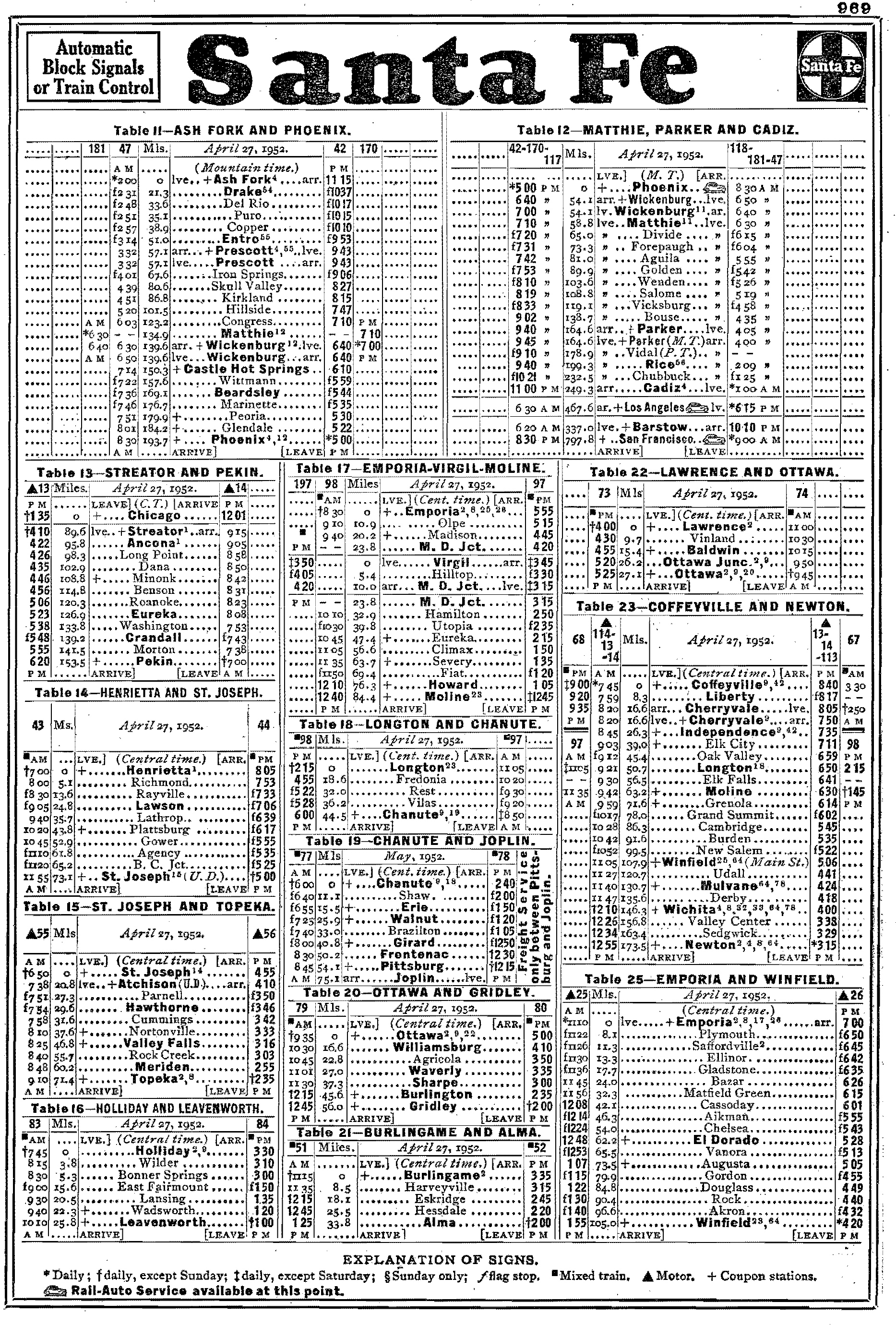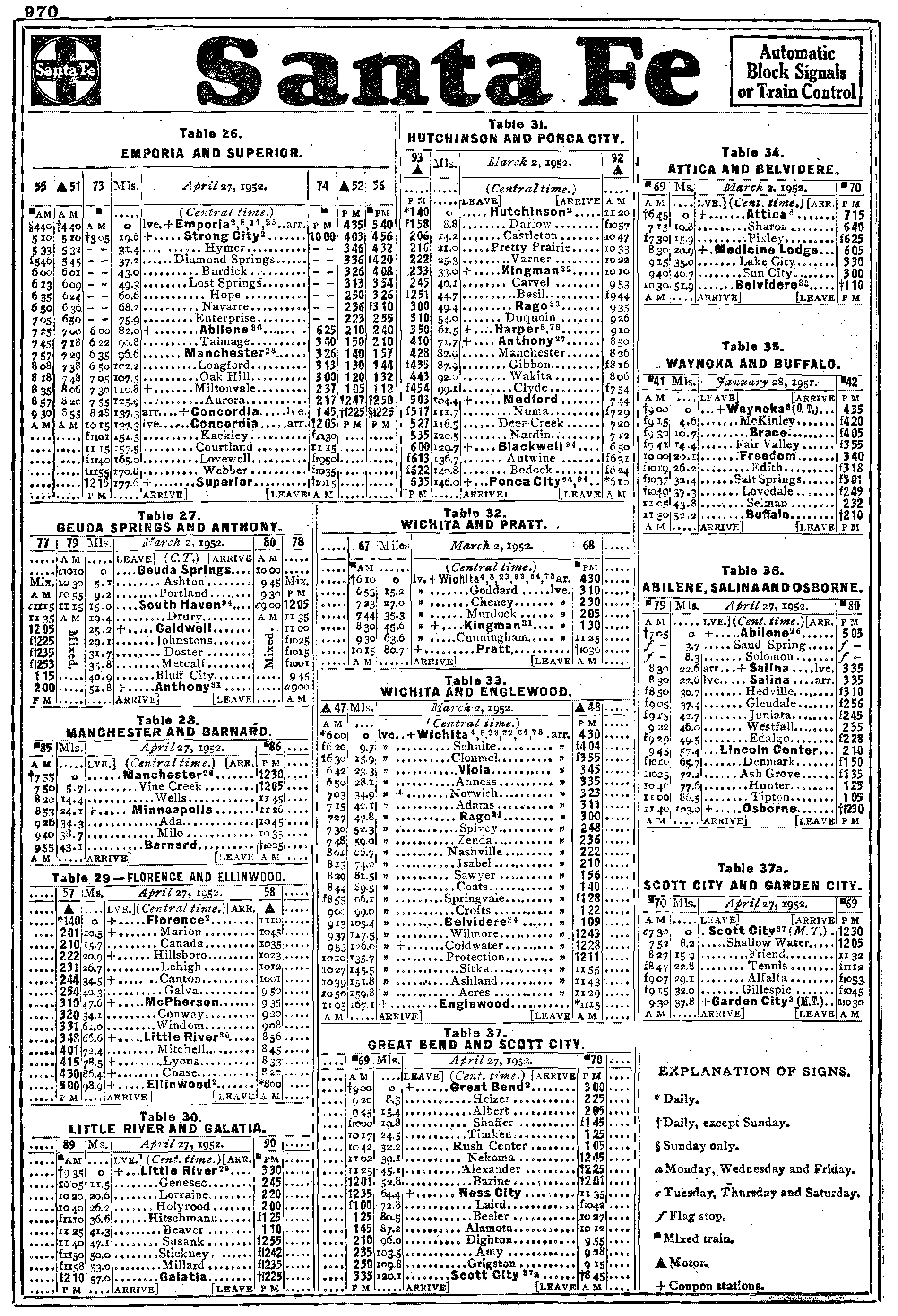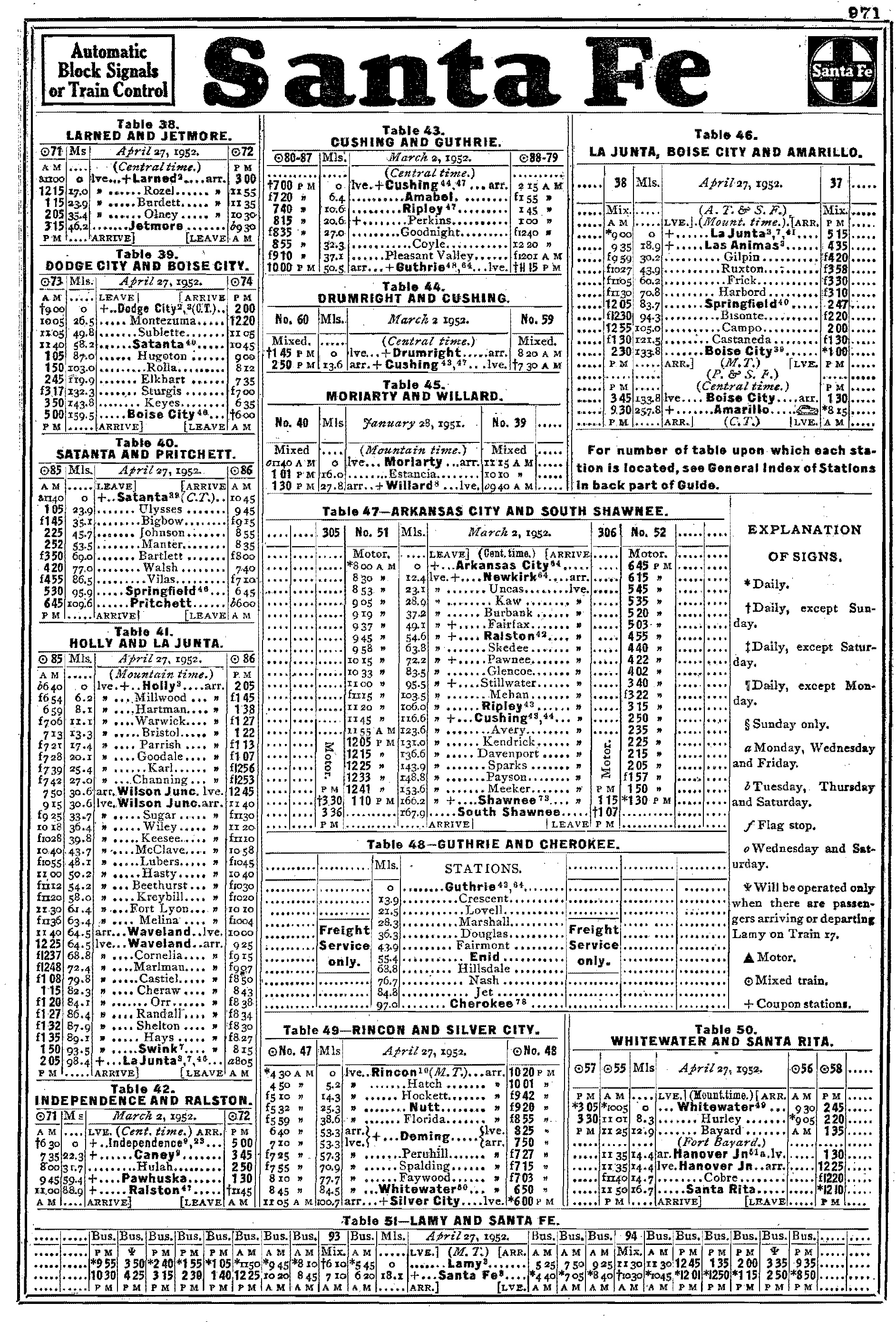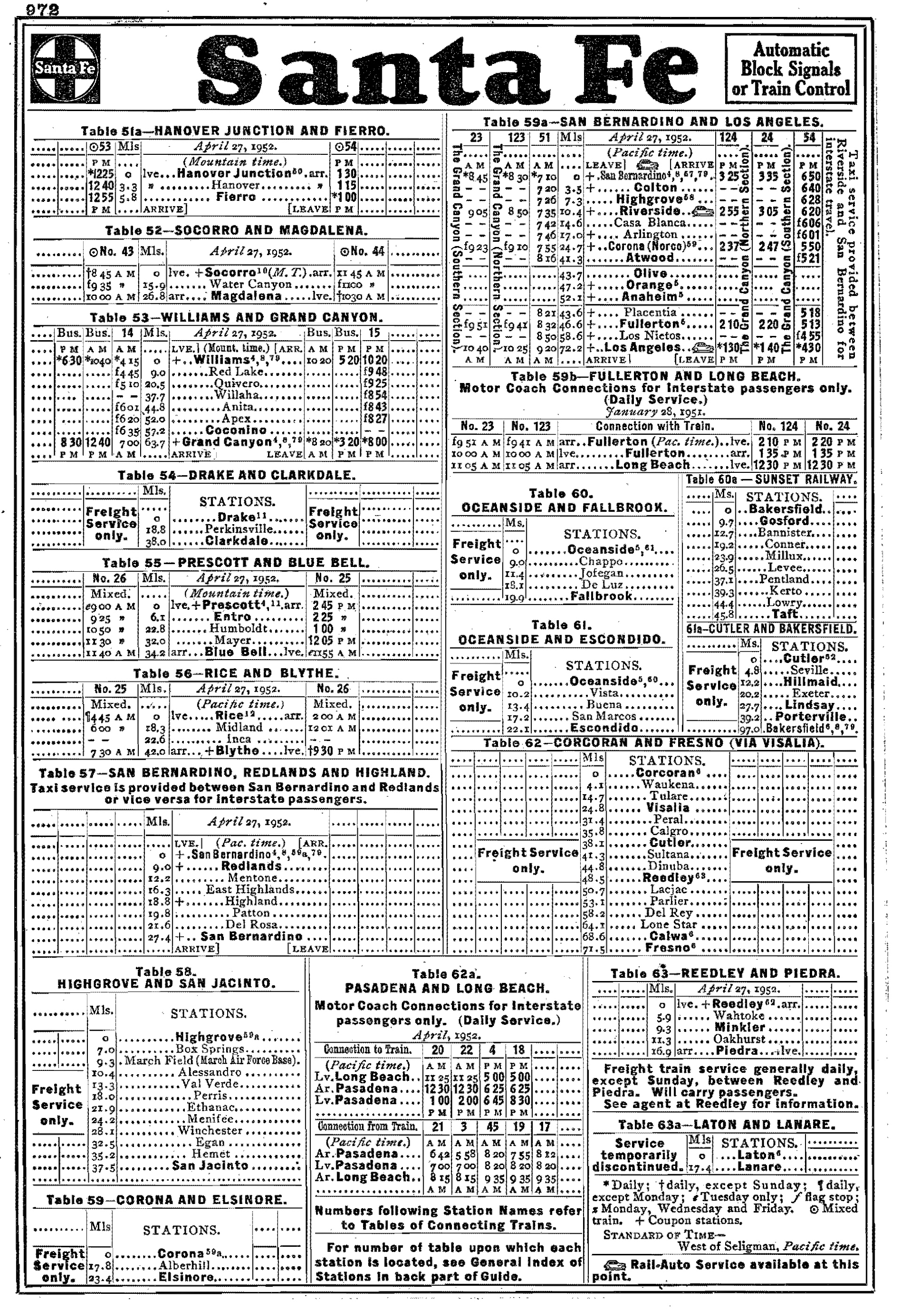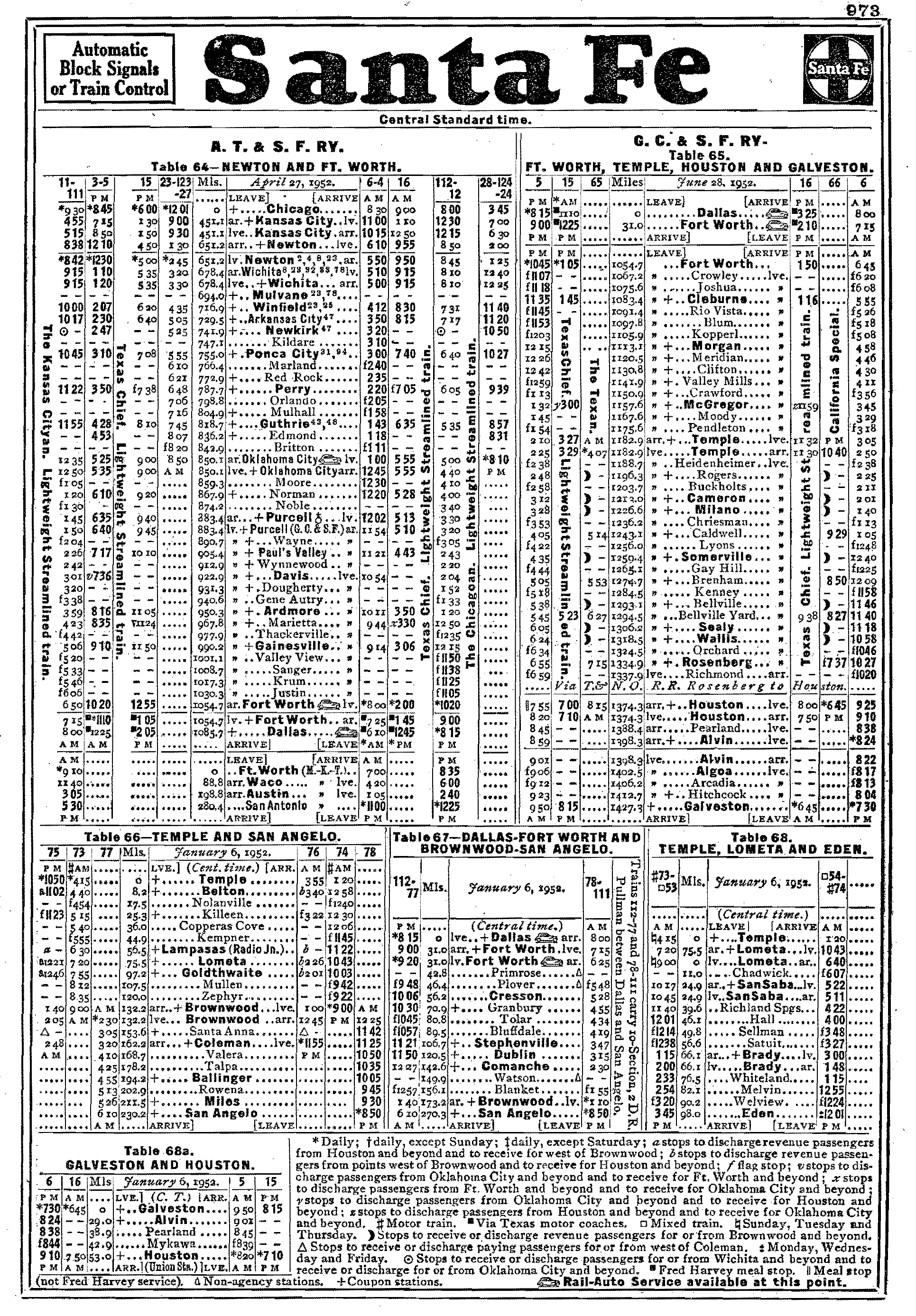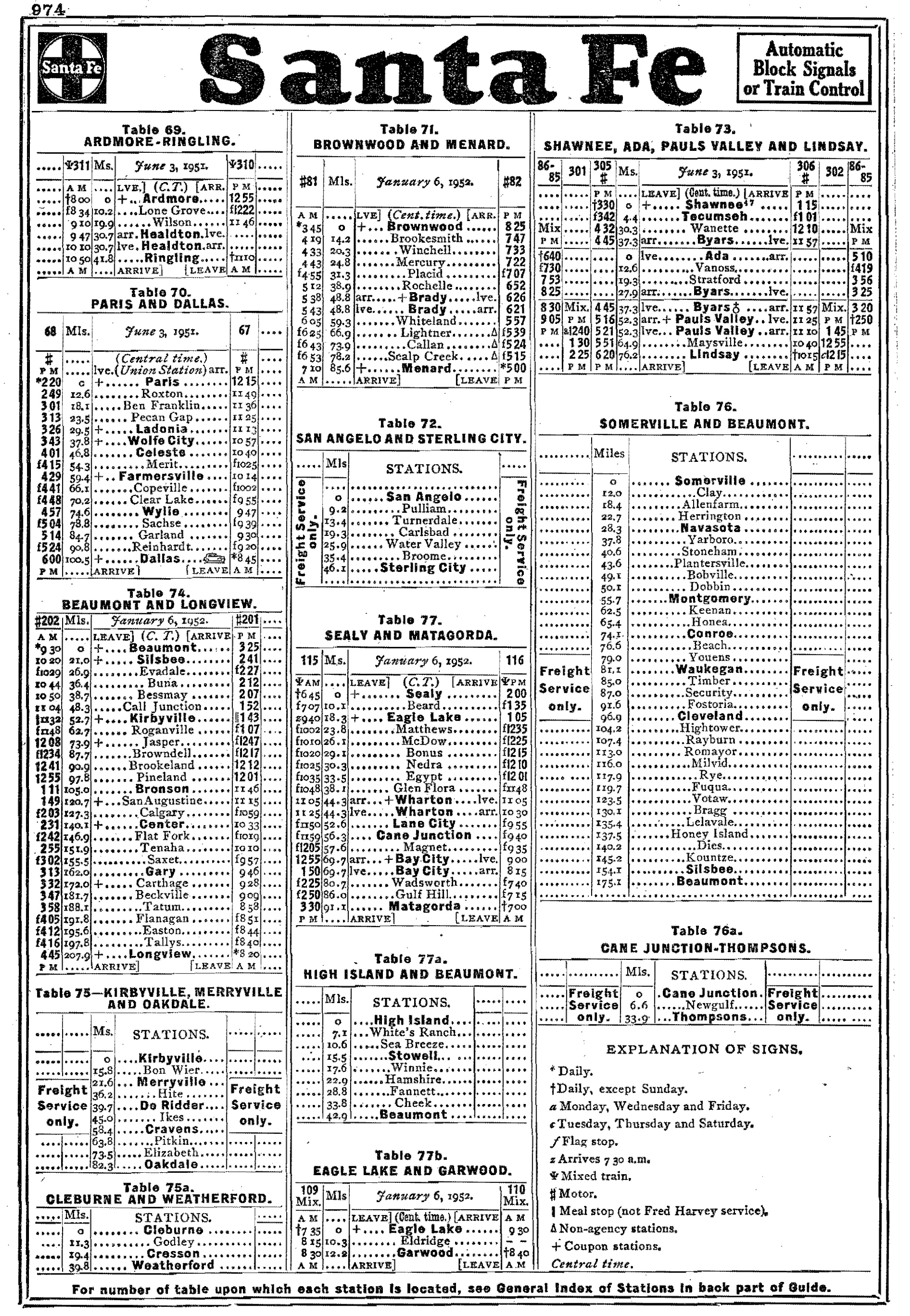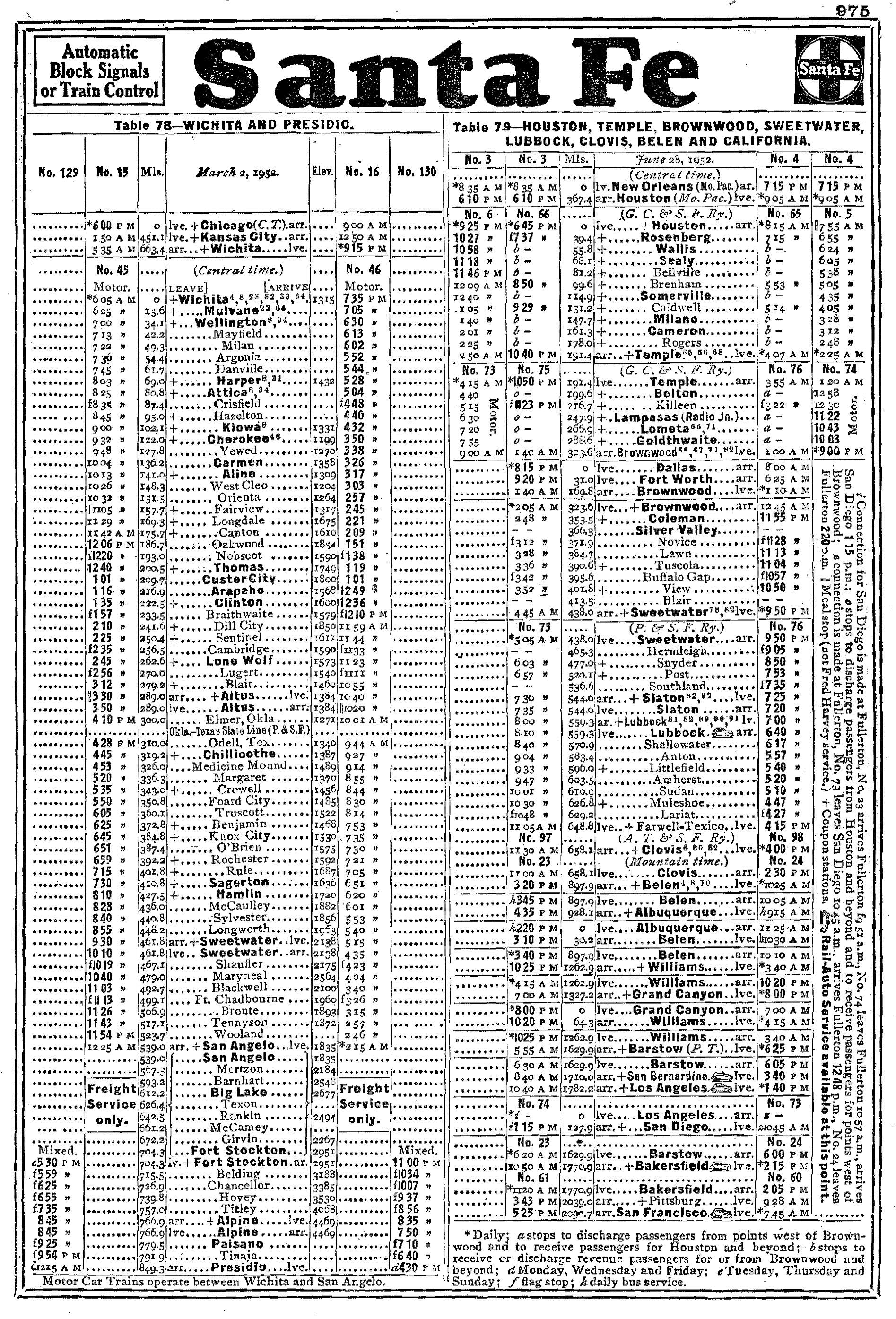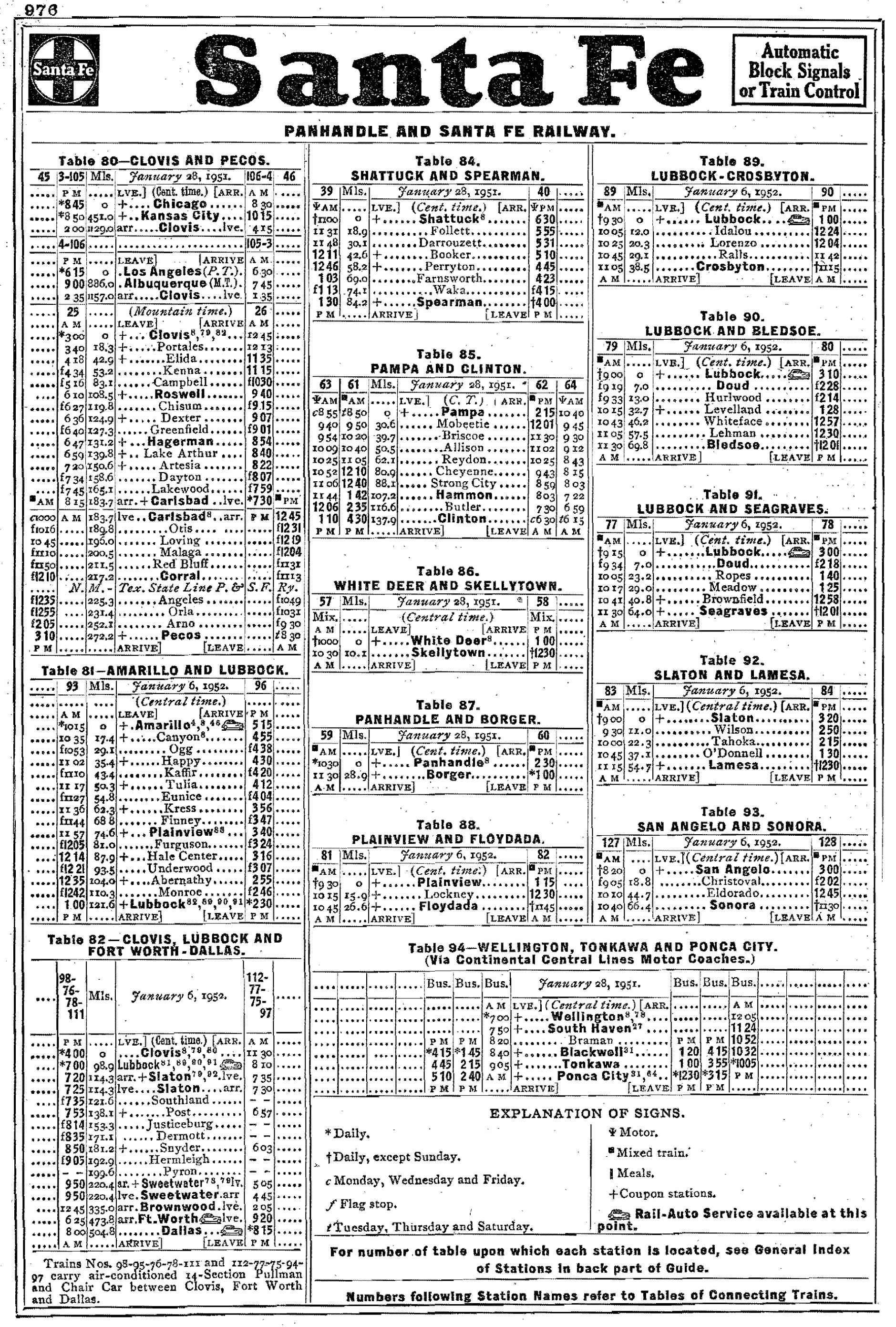Santa Fe Public Timetables (1952)
Last revised: February 13, 2024
By: Adam Burns
As one of the nation's most successful railroads during the 20th century, the Santa Fe contained a prominent display in "The Official Guide Of The Railways." Featured below is its August, 1952 listing which includes all important trains, routes, and also a complete system map with corporate information.
The Atchison, Topeka and Santa Fe Railway (often abbreviated as AT&SF) was one of the larger railroads in the United States, chartered in February 1859.
Named after the cities of Atchison and Topeka in Kansas, and Santa Fe in New Mexico, it was created to connect the regions of the Midwest and the Pacific coast.
The railway was renowned for its passenger train services, especially the Super Chief, a luxury service that ran from Chicago to Los Angeles. In 1996, it merged with the Burlington Northern Railroad to form the Burlington Northern and Santa Fe Railway.
1952 Listing
History
The Atchison, Topeka and Santa Fe Railroad, commonly known as the AT&SF, was born out of a desire to connect diverse regions across the United States. Chartered in February 1859, the railroad's mission was to forge an economic link from the agricultural Midwest to the bustling ports of the West Coast.
The AT&SF served a wide range of states, connecting major urban centers and remote rural areas alike. Over the course of its operation, the railroad extended its reach to Kansas, Missouri, Oklahoma, Texas, Colorado, New Mexico, Arizona, California, and even orchestrated service routes to Chicago, Illinois.
The breadth and reach of the AT&SF was indeed astounding. At its peak, the railroad amassed a rail network of approximately 13,000 miles, spanning from the Midwest to the Pacific Ocean - a notable feat in the annals of American transportation history.
Driven by its extraordinary visionary leadership, the AT&SF quickly became one of the most successful railroads in the United States. The company championed innovation, excelled in customer service, and most importantly, managed to connect key economic regions, thus helping to stimulate growth and economic development across the country.
The AT&SF's ambitious goals required it to acquire and merge with several smaller railroads to broaden its reach and capacity. The consolidation efforts were a testament to its determination to enhance the country's railroad infrastructure and ensure seamless transportation across the nation.
The railroad's pursuit of growth landed it into a significant merger in 1995 with the Burlington Northern Railroad, creating the Burlington Northern Santa Fe Railway (BNSF). This merger marked a new chapter in the AT&SF history, combining the strengths of two giant railroad companies to form one behemoth network.
Notably, the AT&SF is acclaimed for its efficient freight operations. It set new standards for transporting goods across the country, with its emphasis on speed, reliability, and customer service. The railroad's legacy includes pioneering fast freight service and "the unit train", a transportation concept that revolutionized the industry.
AT&SF's commitment to passenger comfort was unrivaled. It operated an array of famous passenger trains, including the esteemed Super Chief, which was known for its luxury service and fast transcontinental travel between Chicago and Los Angeles.
Known for its iconic logo--the “warbonnet” paint scheme on its diesel locomotives, the AT&SF's visual identity left an enduring impression. The famous logo symbolized the railroad's innovative spirit and commitment to connecting the nation.
The AT&SF was a powerhouse employer, at one point boasting over 34,000 workers. These employees, ranging from engineers to switchmen to office personnel, collectively facilitated the smooth operation of a railway system that covered a massive geographical expanse.
The railroad is also known for its significant role during times of war, especially during World War II. The AT&SF transported troops, equipment, and supplies, becoming a critical logistical backbone to the nation's war efforts.
Moreover, the AT&SF played a significant role in promoting tourism to the American West. In collaboration with the Fred Harvey Company, the railroad established Harvey Houses which were comfortable hotels and restaurants for weary travelers, thus encouraging more visitation to the picturesque regions of the Southwest.
As time wore on, the growth of highway and air transport posed significant challenges to the AT&SF's profitability, particularly in passenger services. This led to a strategic shift focusing more on freight services, which continue to carry everything from agricultural produce to manufactured goods.
To keep pace with competition and to stay viable in an ever-changing transportation landscape, the AT&SF—like other American railroads—underwent considerable modernization efforts, adopting diesel power and streamlining operations for improved efficiency.
Despite the vicissitudes of time, the AT&SF, prior to its 1995 merger with Burlington Northern, had acquired a reputation as a robust and reliable railroad, having weathered economic depressions, wars, and transformative industrial shifts.
The merger with Burlington Northern formed the Burlington Northern Santa Fe Railway (BNSF). Although the merger presented significant challenges, particularly in combining two massive infrastructures, it also ushered in new opportunities to collectively provide better services.
BNSF, carrying forward the legacy of the AT&SF, is now one of the largest freight railroad networks in North America. The company continues to prosper by focusing on increasing efficiency, responsiveness, and safety.
Though the AT&SF's passenger service glory days may be a part of the past, the railroad's legacy lives on through its freight operations. Modern trains continue to traverse the historic lines, carrying goods across the nation and fueling economic progress.
The remarkable story of the AT&SF also found its way into popular culture. One notable instance is in the song "On the Atchison, Topeka and the Santa Fe" by Johnny Mercer, which won the Academy Award for Best Original Song in 1946.
Preservation efforts have ensured that the history of the AT&SF is not lost. Museums, like the California State Railroad Museum, display artifacts and educate visitors about the glorious era of AT&SF's dominance in the railroad industry.
The enduring legacy of the Atchison, Topeka and Santa Fe Railroad remains an important part of American transportation history even after its merger with Burlington Northern. Its contribution to the connectivity, economic growth, and development of regions it served cannot be overstated.
In conclusion, the AT&SF's journey painted a vivid picture of American railroad history--a story of innovation, expansion, and resilience. Navigating adversities and evolving with time, the railroad played an instrumental role in molding the American transportation landscape, leaving an imprint that resonates with us today.
SteamLocomotive.com
Wes Barris's SteamLocomotive.com is simply the best web resource on the study of steam locomotives.
It is difficult to truly articulate just how much material can be found at this website.
It is quite staggering and a must visit!

